Motors & Man Stuff
The Home of all Your Manswers!

Suspension Travel and Motion Ratio: Explained
- Motorsport Tuning Guides
If you’re into motorsport or have a passion for cars, you’ve likely heard the term “suspension travel” before. But what does it actually mean, and how does it affect your car’s performance? In this article, we’ll delve into suspension travel and its relationship with motion ratio, which is crucial for a proper understanding of suspension setups.
Understanding Suspension Travel
Factors affecting suspension travel, suspension travel in different applications, compression vs. rebound travel, understanding motion ratio, the importance of wheel rate, q: what is suspension travel, q: how does suspension travel affect a car’s performance, q: what is motion ratio, q: what is wheel rate.
Simply put, suspension travel refers to how far a component of the suspension can move over the full extent of its movement range. In most cases, we’re interested in the vertical wheel travel, which is the distance that the wheel can travel from full droop to full compression. However, suspension travel can also refer to any other part of the suspension we might be interested in.
There are many factors that go into deciding how much suspension travel we need. Two of the most important and interrelated ones are the required stiffness of the suspension we’re working with and the roughness of the surface that the vehicle is running on. These factors will be discussed in detail later in the course.
The required suspension travel varies greatly depending on the application. For instance, a stadium truck running on rough terrain needs a large amount of vertical wheel travel to absorb the energy of a landing and reduce the forces involved. On the other hand, a high downforce single-seater running on a smooth surface requires less travel to keep things like camber, caster, and toe within suitable limits as the car negotiates the circuit.
Another important aspect of suspension travel is how much of the travel is available in compression versus rebound. A sensible starting point is to allow for approximately 2/3 of the available travel in compression and 1/3 in rebound. Having the majority of our suspension travel available on compression allows the suspension to absorb undulations in the road surface, while the rebound travel is there to keep the tires in contact with the road as the chassis heaves, rolls, and pitches.
Motion ratio is closely related to suspension travel and describes how much one component moves relative to the other when they’re linked together. We’re interested in the motion ratio between a number of different elements, but the most common is between the wheel and spring and damper assembly. In almost all cases, this ratio will not be 1:1, and the value of the motion ratio will generally vary as the suspension moves through its travel.
When comparing spring rates between different cars, it’s important to understand that the motion ratio between the wheel and the spring isn’t identical. We care about the effective spring rate at the wheel, which is generally referred to as the wheel rate. By using the motion ratio, we can calculate the wheel rate so we can make more relevant comparisons between cars with different suspension systems.
A: Suspension travel refers to how far a component of the suspension can move over the full extent of its movement range.
A: Suspension travel affects a car’s performance by absorbing energy, reducing forces, and keeping the tires in contact with the road.
A: Motion ratio describes how much one component moves relative to the other when they’re linked together.
A: Wheel rate is the effective spring rate at the wheel, which takes into account the motion ratio between the wheel and the spring.
In conclusion, suspension travel and motion ratio are crucial aspects of suspension design and tuning that can greatly affect a car’s performance. The required suspension travel varies depending on the application, and a proper understanding of motion ratio is necessary for comparing spring rates between different cars. By optimizing suspension travel and motion ratio, you can improve your car’s handling and performance on the road or track.
- Suspension Travel: What Is It and How Does It Affect Your Car’s Performance? – https://www.autosimple.com/suspension-travel-what-is-it-and-how-does-it-affect-your-cars-performance/
- The Importance of Motion Ratio in Suspension Design – https://www.nolimitmotorsport.com/blog/the-importance-of-motion-ratio-in-suspension-design/
- How to Calculate Wheel Rate: A Simple Guide for Racing Suspension – https://www.speedwaymotors.com/the-toolbox/how-to-calculate-wheel-rate/31488
Related Stories
Unlocking the power of the c8 corvette: proven bolt-on power adders, boosting your c8 corvette: a comprehensive guide to superchargers and turbochargers, breaking records: the c8 corvette’s best 1/4 mile times.

View all articles
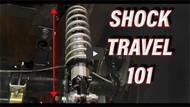
How Much Shock Travel Do I Need?
Shock travel: You need it, but how much and why? Ultimately, it comes down to how you’re using your vehicle. A trophy truck with crazy long travel suspension designed to soak up canyons at 100 mph will have a very different answer than an autocross car that’s sucked down to the ground.
For the sake of today’s explanation, we’re going to stick to general street cars . That means you’re using your vehicle to cruise down roads that have imperfections, railroad tracks, and speed bumps ... not dedicated track cars that live on the autocross, drag strip or road course. Those vehicles may require very different answers based on a number of factors, from aerodynamics to tire size and track surface.
WHAT IS SHOCK TRAVEL?
Shock travel measures a shock’s movement through both compression and extension strokes. Compression means the shock’s piston rod is pushing up into the body of the shock, shortening (or compressing) in length. Extension is the exact opposite, meaning the piston rod is being pulled out of the body. This lengthens (or extends) the shock’s overall length.
Ultimately, you want enough travel in your shock not to top it out or bottom it out. Your shock should never be fully extended or compressed through your suspension’s full range of movement. What happens if it does? Nothing good. Not only will it give your car a rough ride, but a shock that does not have enough travel can cause performance issues and even damage your shocks or other suspension components.
HOW MUCH SHOCK TRAVEL DOES A STREET CAR NEED?
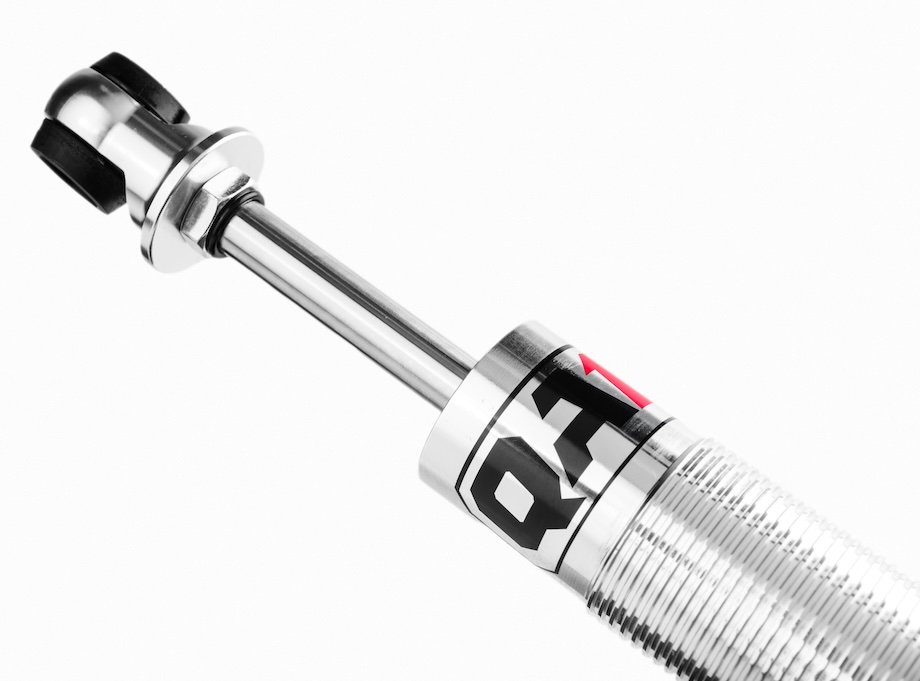
This depends on what type of suspension you have. It differs between straight axle suspensions and independent suspensions.
On straight axle suspension systems there is a 1:1 ratio between the movement of your shock and your wheel. That means if your wheel moves one inch, your shock extends or compresses one inch. In these applications 2.5 inches of shock travel in both directions (compression and extension) should generally be enough.
Depending on the way your suspension is set up, you may need more. If you want to limit body roll for stiffer handling, you may want less travel than that. But even in these cases, your shock should not be thing limiting your suspension—ie being fully extended to keep the car from experiencing body roll.
For independent suspension systems, shocks do not require as much travel. That’s because the control arm acts as a lever. So, while your shock may only be moving an inch, your wheel could be traveling two inches. It could be moving 3 inches. It all depends on where your lower shock is located. The closer your shock is to your wheel, the closer to 1:1 that motion ratio will be.
When measuring for shock travel on an independent suspension system, start with wheel travel. Make sure it can move 2.5 inches in both directions. To check this, measure between your upper and lower shock mount when your suspension is fully compressed and at full droop. This will tell you how much overall stroke you’ll need to keep from bottoming out or topping out your shock.
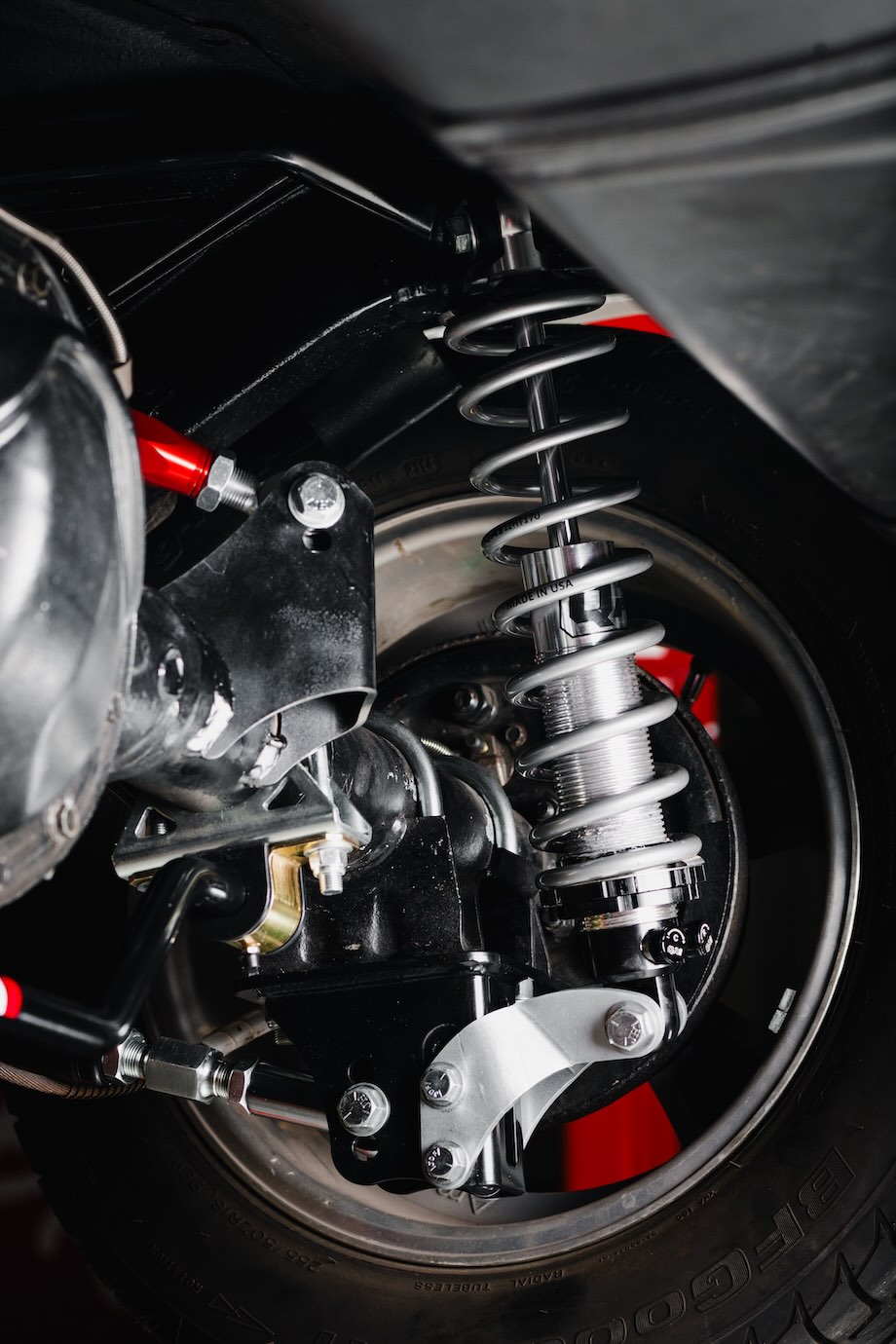
SHOCK TRAVEL FAQs
What if i’m building a custom suspension setup.
When setting up your own shock mounts, make sure you have a range of motion that allows enough travel. Just as importantly, make sure you can find and fit a shock that provides that much travel when extended and compressed. Any time you’re adding length, you’re adding stroke to the shock – meaning the shock will have a larger body. Browse QA1 custom mount coilover shocks.
How much shock stroke do I need for a street car?
For straight axle applications, most cars will require a shock with 5 inches of stroke or so. This allows for the 2.5 inches of compression travel and 2.5 inches of extension travel mentioned above. Independent suspensions will vary depending on their design. Use the method mentioned above to measure your shock amounts and find out how much stroke is required.
BRINGING IT ALL TOGETHER
We hope this helps answer some of the questions you might have about shock travel. Looking to find the right shock for your car or truck? Our tech team is happy to help. Give us a call at 952-985-5675.
- #Blog Content
- #Suspension Tuning
- #Troubleshooting
Recent Blog Posts
© Copyright 2024 QA1. All Rights Reserved

- Search forums
Follow along with the video below to see how to install our site as a web app on your home screen.
Note: This feature may not be available in some browsers.

Suspension travel - How much do I need?
- Thread starter Eddie
- Start date Mar 29, 2017
- Mar 29, 2017
Hi. I'm in the planning stages for my build. I'm pretty sure I will be making my own frame and some, if not all, suspension components. I'd be grateful if anyone can give me some numbers. In order to get things right I need to know how much travel I need. This is not as simple as it sounds as I need 4 measurements. What I need is... Front: Amount of Bump (upward) travel, and amount of Droop (downward) travel. Same for the Rear: Amount of bump and amount of droop. All measured from the normal ride height, with gas in tank and driver on board. (or not, as long as you tell me which way, empty or loaded) Now, how do you measure this? Is it travel at the wheel or travel at the suspension mounting points (where the rods attach to the axle). At this point I don't mind which, as long as I know how you measured it. Again, all assistance is greatly appreciated.
Active Member
Measured at the axle where the spring mounts , rear - compression =2.5" , rebound = 2.5" front - compression = 1.5" rebound - 2.5" from sitting height
2old2fast said: Measured at the axle where the spring mounts , rear - compression =2.5" , rebound = 2.5" front - compression = 1.5" rebound - 2.5" from sitting height Click to expand...
Do we have any more contributions on this topic? The more I get the better.
- Mar 30, 2017
CCR ( I tried to get it to go to their plans but it keeps going to their "Package Deals")
HenrysT said: CCR ( I tried to get it to go to their plans but it keeps going to their "Package Deals") Click to expand...
G'Day Eddie, I've been building Clubman Sports Cars for a few years, and we allow 2/3rd's travel in bump (Loaded) and 1/3rd travel in droop.(Unloaded) when we set up suspension. Regards, Mike.
- Mar 31, 2017
Most front shocks you see on buckets only have about 3" of travel so that is going to be your limitation regardless of any rock climber suspension you design. The rears are not much more. Speedway T-Bucket Short Shocks, Chrome Pro Shocks® SM300 Pro Street Rod Shock, 9 Inch Ride Height
AusBucket said: I've been building Clubman Sports Cars for a few years, and we allow 2/3rd's travel in bump (Loaded) and 1/3rd travel in droop.(Unloaded) when we set up suspension. Regards, Mike. Click to expand...

AusBucket said: G'Day Eddie, I've been building Clubman Sports Cars for a few years, and we allow 2/3rd's travel in bump (Loaded) and 1/3rd travel in droop.(Unloaded) when we set up suspension. Regards, Mike. Click to expand...
fordsbyjay said: Most front shocks you see on buckets only have about 3" of travel so that is going to be your limitation regardless of any rock climber suspension you design. The rears are not much more. Speedway T-Bucket Short Shocks, Chrome Pro Shocks® SM300 Pro Street Rod Shock, 9 Inch Ride Height Click to expand...
Spanky said: I used this 'formula' when setting up mine, and no problems to date! View attachment 13216 View attachment 13217 Click to expand...
2old2fast above is pretty close to what I use. I generally allow 3" on the rear where he uses 2.5". The main thing is you don't want it to bottom out on a big bump. The front end of these things doesn't move a lot, but the rear end is closer to where you're sitting. If it bottoms out you'll feel it in your backside. Also, droop is not a big issue; it can be as little as 1/3 of bump, as AusBucket said above.
meangreen said: 2old2fast above is pretty close to what I use. I generally allow 3" on the rear where he uses 2.5". The main thing is you don't want it to bottom out on a big bump. The front end of these things doesn't move a lot, but the rear end is closer to where you're sitting. If it bottoms out you'll feel it in your backside. Also, droop is not a big issue; it can be as little as 1/3 of bump, as AusBucket said above. Click to expand...
- Apr 1, 2017
meangreen said: The main thing is you don't want it to bottom out on a big bump. The front end of these things doesn't move a lot, but the rear end is closer to where you're sitting. If it bottoms out you'll feel it in your backside. Also, droop is not a big issue; it can be as little as 1/3 of bump, as AusBucket said above. Click to expand...

Ouch!! That is not good. If the Watts link is that close it's a poor design. I hope you got that repaired. I did consider a watts link but rejected it. There will be no panhard rod either.
Eddie said: Ouch!! That is not good. If the Watts link is that close it's a poor design. I hope you got that repaired. I did consider a watts link but rejected it. There will be no panhard rod either. Click to expand...
Similar threads
- Oct 21, 2023
- Dec 7, 2023
- Aug 15, 2023
- Jul 3, 2024
- Classifieds
- Aug 17, 2023
- Introductions
- Thank you for visiting the T-Bucket Forums! This site was created in 2006, to provide enthusiasts with a place to discuss T-Buckets. Over the years, there have been many imitators, but this is the T-Bucket resource you have been looking to find. We encourage you to register a FREE account and join in on the discussions.

DSPORT Magazine
Automotive Performance + Tech Magazine
SUSPENSION 101: Everything You Wanted To Know About Vehicle Handling
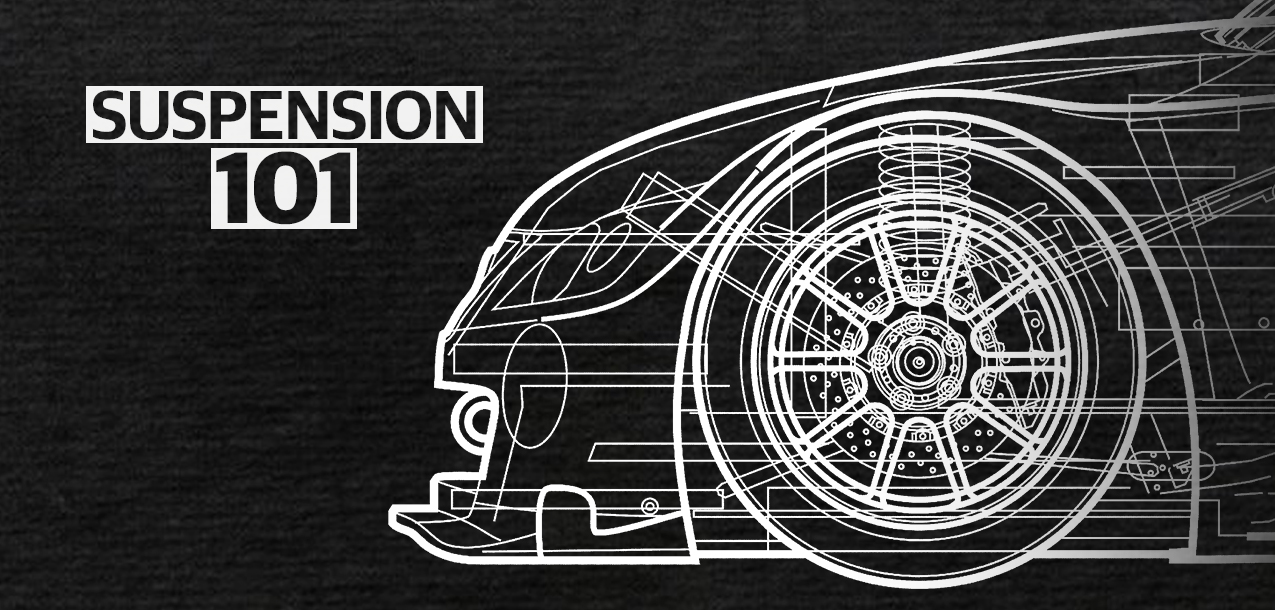
Making your car handle well is a really complicated task if you overthink it. Ride frequencies, roll centers, camber curves, scrub radii; it’s enough to make you build show cars instead. So, I have an easy solution for you: ignore all of that stuff. Odds are that you can make your car handle better than most by knowing the following five things.
Text by Dave Coleman // Photos by DSPORT Staff
DSPORT Issue #148

Number One: Tires
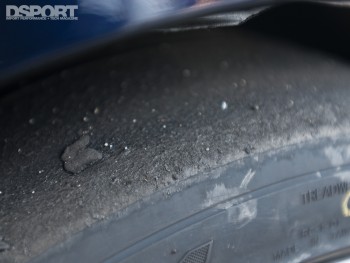
What about treadwear rating? You might be thinking, “Isn’t a tire with a treadwear rating of 40 far grippier than one with a 400?” That’s probably true. The treadwear rating is a decent indicator of a tire’s performance capability, but don’t nitpick it. A 160 treadwear is not necessarily stickier than a 200. The more modern a tire design, the higher its treadwear rating can be while still being sticky. In fact, the Uniform Tire Quality Grade Standards (UTQG) treadwear rating is actually the minimum treadwear of that specific tire. It’s at the manufacturer’s discretion whether they want to classify a high performance tire as a “100” treadwear tire for marketing purposes even though it may offer enough tread life to be comparable to a “200” treadwear tire. Don’t waste your time comparing treadwear ratings between manufacturers, as every tire company hires its own independent testing company to conduct the tire tests. Unless any inconsistencies come up in the final data, the Department of Transporation doesn’t bother to regulate.
In the end, experience is the best tool for picking a tire. If you don’t have enough experience, use somebody else’s. See who is fast at the track and ask what tires they like, and why.
Number Two: Travel
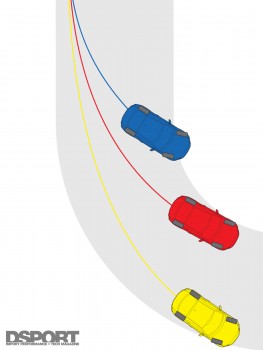
Having enough suspension travel is almost as important as having good tires. Think about this when you’re fantasizing about how low you want your car to be. Some cars, like the old double-wishbone Civics, have so much travel that you can be in the weeds and still have plenty of travel. Others, like the MAZDASPEED3, can hardly be lowered at all before they start pounding the bump stops.
How much travel you need is determined partly by the terrain you’re driving on and partly by your suspension setup. Having stiffer springs means your suspension will move less, so you don’t need as much travel. The same is true if you have a lot of low-speed damping from your shocks. The next item might not be so obvious: you’ll need more travel and/or a stiffer suspension if you have really sticky tires. The reason is simple; more grip on the road means more body roll, which uses up more travel.
There are ways to maximize the amount of usable suspension travel range that involve adding more parts and making more changes to the entire system to balance out all the other dynamic factors. The simplest travel solution, though, is simply not to lower your car so much.
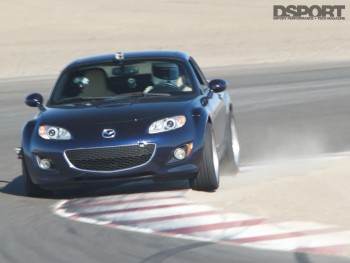
The red Miata shows excessive body roll with factory suspension. The blue Miata equipped with coilovers shows reduced body roll.
Article continued on page 2 >>>.
Suspension List
The Right Suspension For You Is A Necessity, Not An Option
Sport Suspension Vs Normal Suspension (With Pros And Cons)
Written by: Thomas
Published on: September 16, 2022
As an Amazon Associate, I earn from qualified purchases.
Suspension is a critical part of a car’s performance and provides the vehicle with stability in various scenarios. However, there are a variety of different suspension systems that can be used, each with its benefits and drawbacks.
As far as we can see most of the suspension systems currently available in the market fall under two major categories, which are sport and normal suspension. At this point, the sport suspension vs. normal suspension debate continues to spread among vehicle enthusiasts.
Before you encounter any issues after spending your hard-earned cash on an aftermarket suspension system, you ought to learn more about the two categories to make sure everything turns out according to your wants. For this reason, here we present a comparison between sport suspension and normal suspension to help you have a better idea of what you need.
Sport Suspension Vs Normal Suspension In a Table
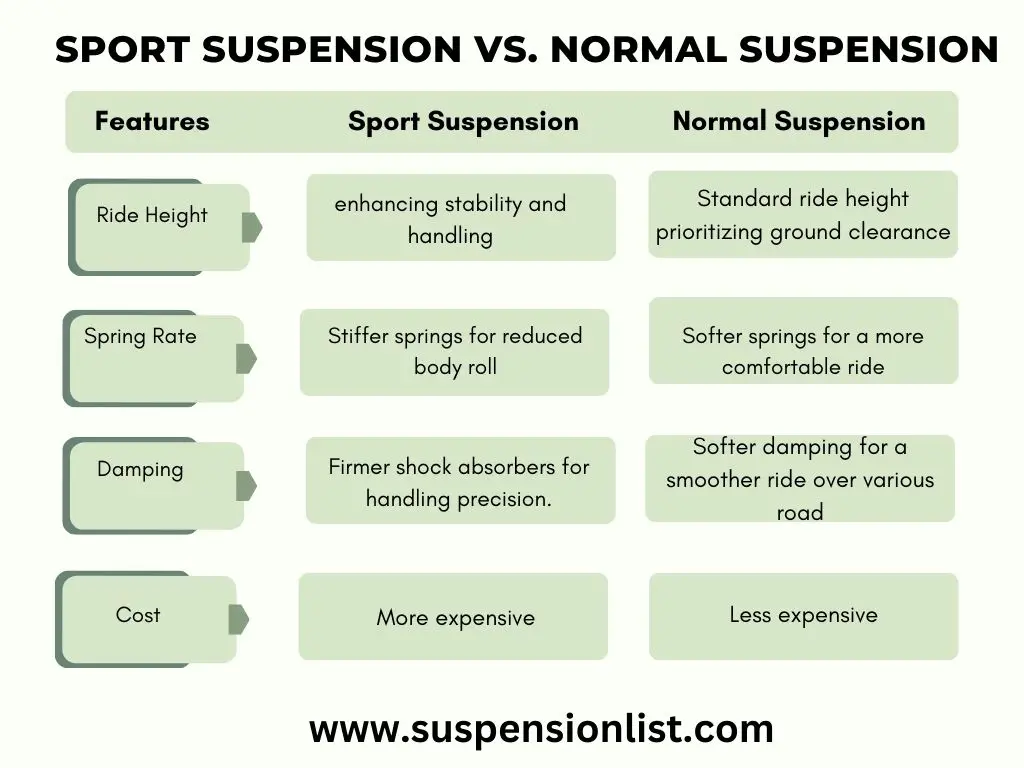
What Is A Sport Suspension?
A sport suspension is a type of suspension that is specifically designed to provide more extreme handling and skiing performance.
It is also often used in racing, where it can provide better stability and grip. Sport suspension typically has higher stiffness and resistance to deflection than normal suspension. This allows the vehicle to rock more heavily when cornering or turning, which gives you more control over the car.
What Is A Normal Suspension?
Normal Suspension works by using shocks to dampen the movement of the car. This helps reduce body jolts and makes it easier for the driver to maintain control while driving.
For ordinary driving conditions, such as regular roads and a regular commute, the regular suspension will accomplish its purpose. The downside to this system is that it often loses its effectiveness as the car ages or becomes harder to handle in certain areas.
Sport Suspension Vs Normal Suspension – What Are The Differences?
In general, we’re better able to pinpoint the meaning of the words related to suspension than we are to understand them. For ordinary road driving, we experience a suspension that is just “acceptable” for the vehicle, while for high-performance automobiles, we highly recommend one that offers more overall performance.
Some luxury cars even have suspension modes that serve the twin purposes of isolation and closeness, allowing the driver to choose between sports or standard options with a flick of a dial. You have a chance to see the distinction, but what could set them apart? Check it out below.
Weight Distribution
Suspension is the term used to describe how a car’s weight is distributed around its frame. Normal suspension means that the weight is evenly distributed around the frame, with no more than 50% of it on one side of the vehicle.
Sport suspension means that the weight is spread evenly across the frame, with more than 50% of it on one side of the vehicle. This difference can make a big difference in how well a car behaves when cornering or braking.
Ride Quality and Handling
In most cases, a normal suspension works by the shock absorbers being able to “bounce” when they move. This is because when the car is bouncing around, it creates motion that the shock absorber can sense and correct.
When you add a high-end sports suspension, however, the shocks are specifically designed to resist movement and stay in place instead of bouncing. This mechanism creates a significant difference in handling.
Furthermore, high-end sports suspensions use a wider and taller armature than normal suspensions. This widened, and taller armature helps to provide greater compliance and better handling.
On top of that, sports suspensions also use lighter springs than normal suspensions. This lighter spring helps to reduce harshness during acceleration and braking, which can be beneficial in races or other competition settings.
Application
Sport suspensions are typically designed for racing or track use, while normal suspensions are common in everyday life. When choosing between sport and regular suspension, it’s important to consider how you plan on using your car. If you plan on mostly driving off-road or using street cars for commuting, a regular suspension would be better suited for you.
With high-end sports suspensions, the shocks are specifically designed to provide a better ride and handling. This allows for a greater range of motion and more stability when the car is moving. The shocks also have more rebound and firmness which gives the car a neater look and feel.
The design of different types of suspension systems used in sport and normal vehicles can have a significant impact on both ride and handling. However, in general, sports suspensions are designed to provide more lateral displacement for the car and allow for more support during cornering.
As a result, they typically have higher ride heights and should be proportioned to the vehicle’s track width. Normal suspensions, in contrast, are designed to provide ground clearance and stability at all speeds. They typically use smaller shocks than sport suspensions and typically rely on FK or coil-over feedback mechanisms to control travel and height.
In addition, normal suspensions tend to be installed deeper into the car’s chassis than sport suspensions so that they are less likely to interfere with wheel contact during movement.
Pros and Cons of Sport Suspension
Here are the pros and cons of sports suspensions:
- Ride height adjustability makes it more versatile for different types of racing events.
- Multiple variations for different surfaces allow for an even more varied driving experience.
- Increased stability can come with sports suspension, making it less likely to end up in accidents during races.
- Allow for a greater degree of body movement, which can give your car more power and stability while cornering or driving in slippery conditions.
- Increase the comfort of the driving experience
- Higher chance of ending up on the driver’s lap
- They tend to be stiffer
Pros and Cons of Normal Suspension
Let’s check the pros and cons of normal suspensions as well:
- Normal suspension can be less expensive than sports suspension, so it can be a better buy in cases where money is tight.
- This is the best option in terms of daily use.
- It often eliminates the need for a separate shock absorber.
- Allows for a more natural movement of the car in both directions due to the contact patch between the tires and the road.
- Not suitable for cars that have overweight or poorly designed suspensions.
- May not provide enough travel for you to get around tight corners or shifts in weight on rougher roads.
Sport Suspension Vs Normal Suspension: Our Verdict
Suspension is a vital part of a car’s function. It allows the car to move through its surroundings and can help improve braking and handling. As we have already mentioned, sports suspensions are designed for more performance and handling, while normal suspensions are better for everyday use.
Technically, normal suspensions apply pressure to both the front and rear wheels simultaneously, which provides a smooth ride and increased stability. Sport suspensions apply only pressure to the front wheel, which gives the car more power and speed. This type of suspension is often used on professional racing cars or motorcycles.
However, each person has their preferences when it comes to suspension, and what may work for one person may not work for another. Some people prefer normal suspension, while others prefer sport suspension. Sport Suspension uses more aggressive shocks and is designed to provide more stability in the car.
At the same time, some people think that this type of suspension can be harder to control than normal suspension. This means that you may have to use more force to move the car and make it go where you want it to go. On the other hand, regular suspensions are usually easier to control and can be used in most cars without any modification.
More differences:
- Air Ride vs. Hydraulics (With Pros And Cons)
- MacPherson Strut vs. Coilover – What Is The Difference?
- BC Racing Vs Megan Coilovers (With Pros And Cons)
- Rev9 Coilover Vs Truhart: What Are The Major Differences?
- Truhart vs. Godspeed Coilovers – A Real Comparison
- Godspeed vs. Megan Racing – A Real Comparison
About Thomas
5 Chevy Tahoe Climate Control Problems
5 best coilovers for fg2 (review) in 2023.

Race Suspension Tuning Basics, 7 Things You Need to Know

Speed is king, right? Kind of. It’s certainly impressive to see a car take a long corner at breakneck speed, but what’s more impressive is seeing a car keep that speed seemingly effortlessly into a sharp corner without the driver feeling like the car might spin out of control.
Enter suspension.
When you watch racing on TV, you’ll notice the multitude of engineers intently staring at data screens, logging information, and receiving driver feedback, all to optimize the vehicle setup on race weekend.
It can be overwhelming to think about as there are many components and settings you could adjust to level up your performance, but you’ve decided to focus on tuning your suspension; great choice! Making adjustments to your suspension can yield improvements in lap times and make your ride more comfortable.
Knowing where to start can be daunting. You might have the best suspension components, but they need to be set up to work together optimally to give you the best performance.
7 Things You Need to Know About Race Suspension Tuning
You can think of suspension tuning as the final piece of the puzzle when it comes to setting up your vehicle. When your suspension is firing on all cylinders, your tires will stay in contact with the road or track in any situation.
If your suspension is improperly tuned, it could lead to handling problems, lost seconds on the track, and you’ll always have the feeling that something isn’t quite right.
You’ll see a marked improvement in your vehicle from nailing the basics of suspension tuning. Finding the perfect balance between comfort and performance takes work, but it’s worth the effort.
What is the Goal Of Suspension Tuning?
The true goal of suspension tuning is to improve how the car handles; in other words, its ability to maintain a course through turns, braking, different surfaces, and weather conditions. To keep the right course, you’ll start by Increasing ground contact or tire grip as you travel through a corner.
The Right Components
A suspension comprises tires, tire air, springs, and shocks that connect your vehicle to its wheels. It serves two purposes:
- Optimizing vehicle handling on the road
- Keeping your tires firmly planted on the ground
Manufacturers play a role here as they can provide parts optimized for your particular vehicle. Custom shocks and the ability to make adjustments with guided support are helpful when setting up your suspension.
Learn more about What Brand Of Racing Shocks Is Right For Me?
Get the Right Tools
You’ll need to test and retest, so it’s essential to record the changes you make - what works and what doesn’t. Knowing the baseline values of suspension means you’ll have a reference to work off of as you go. You’ll need:
- Tire pressure gauge
- Tire pyrometer
- Toe plates with tape measures
- Data system for lap times
- A notebook or binder to make notes
Having a notepad to store backup versions of your suspension settings will give you a whole season of logbook data. You’ll have a history of settings for various tracks and weather changes and the adjustments you make. You’ll also be able to return to your original settings just in case you want to start again.
Check out our FREE DOWNLOAD: Shock Build and Shock Setup/Lap Time Worksheet In this free download, we provide both our Standard Shock Build Sheet, which is a great way to keep all your shock builds organized, and a Setup/Lap Time Sheet, a great tool to help improve your communication and record keeping of your chassis setup.
Figure Out What you NEED to Adjust
You know your car the best, and the most critical metric is how it drives and feels on the road or track.
- Do you know your power to weight ratio?
- Does your car tend to oversteer on certain turns and understeer on others?
- What’s your balance and weight distribution?
- What are your tire specs?
- What are the track conditions?
- Camber? Elevation?
Once you’ve made incremental adjustments, you can test and either go backward or make further adjustments. The most critical metric is adjustments based on your own experience, and your relationship to the car will level up your performance.
Think Smart, Not Fast
You need to find a balance between handling, braking, and power. Setting up for speed doesn’t make your car the fastest if it’s at the expense of acceleration and handling or grip in corners. Find a sweet spot.
Another tip for working smart is to start with the complex parts of a suspension setup like spring rates and ride height and work towards the more straightforward stuff like tire pressure. If, when you’re testing, things aren’t going to plan, work the other way.
Weather Changes
Your setup will change as the weather changes, and this is where having a logbook of adjustments will come in handy. The weather could change between races, and you need to cope with wet/dry weather and cold/hot weather.
Circuit Changes
Let’s say you just raced a circuit with long, fast straights and long, shallow corners, but your next race is full of short straights and tight corner sections; you’re going to alter your setup. The same applies to smooth or bumpy tracks.
Suspension Setup
Here’s a brief overview of your suspension setup and the adjustments you could make.
Ride height
Before you adjust your suspension, are you happy with the height of your car? Your suspension geometry is designed around the ride height.
Essentially, a sway bar connects your right and left side compression. As you hit a bump, the right side compresses, but the left doesn’t, which causes lean. A sway bar connects the two so that they both compress and are adjustable.
Camber Angle
Camber is the angle applied to the tires, and it alters the tires’ contact patch with the road.
Positive camber will produce a tendency towards oversteer. The car might hop during heavy acceleration. In corners, the rear end might lack grip and slide out. Tire wear increases with uneven wear on the outside tread.
Negative camber increases grip and stability in corners but might increase understeer. It is more predictable, however. Most race cars tend to be either straight or negative.
0 degrees of toe means the front wheels are perfectly straight with the steering wheel straight.
Toe in means the tires are closer together than at the back, and the car won’t turn as well, but it’s more stable at high speeds.
Toe out means the front tires are further away than the back, and the car will wander a bit more and turn a little better.
You can adjust the damping force when your shock tries to compress and when it rebounds.
You can also adjust the speed of compression and rebound.
Low speed affects braking, accelerating, and turning. These are all smooth loads on the suspension, and you can adjust the resistance to those movements and loads.
High speed comes into play when you hit a bump or a rock. Your shock compresses quickly, and you can adjust the resistance to make the shock stiffer or faster/smoother.
Low and high-speed rebound is also adjustable. After you brake, does the car come up slowly or quickly? Similarly, how fast does the shock rebound after hitting a rock or going over a bump?
Tire Pressure
How much air is in your tires? It’s essential to think about adjustments you need to make with tire pressure because it’s temperature-dependent. You might start with 25 psi, but after going around a track 30 times, you might have 35 psi - it’s essential to consider this.
How much brake pressure goes to the front and how much to the back? Different situations will determine how much you need to adjust.
Rough or Smooth?
Consider whether you’ll be on a rough or smooth track. Find out pre-race and make adjustments.
For example, you’ll probably want lower ride height and stiffer spring rates for better handling on a track, but on a rough road, you want high compression so that your car rebounds quickly after compressing. Depending on your application and how much you race will determine the adjustments you need to make.
These are basics, and making the necessary adjustments will provide you with improved performances. It’s best to start at factory settings and work from there, one step at a time.
Once you’ve set up your suspension and made adjustments, you’ll want to delve into problems you might run into, such as oversteer or understeer.
Check out our ON-DEMAND WEBINA R: Top 10 Most Common Suspension Issues & How to Resolve Them In this free webinar, we review the most common suspension issues you're likely to encounter and tips for how you can resolve or avoid them altogether.
Digging Deeper Into Race Suspension Tuning
You’ve researched the various ways to adjust your suspension; now it’s time to think about where you’re sourcing your parts from. You can’t cut corners when it comes to components such as shocks and springs, and you’ll need race-specific shocks that offer excellent handling but also maintain good ride quality.
Penske Racing Shocks are customized to your vehicle and driving style. Experienced support is key to optimizing your suspension setup. You can speak to professional racers on the phone who have seen it all and want to help.
To find out more about Penske Racing Shocks, get in touch with our shock specialists here.

- Shocks 101 (9)
- Shock Tuning (5)
- Motorcycles (4)
- Drag Racing (3)
- Dirt Racing (2)
- Videos / Webinars
Related Articles
Racing shocks explained in less than 10 minutes, 6 things we all hate about rebuilding racing shocks, what to look for in the best rear shocks for drag racing.

- Events – ACP
- Features – ACP
- Special Features – ACP
- Tech – Engine, Transmission, & Rearend – ACP
- Tech – Exterior – ACP
- Tech – Interior – ACP
- Tech – Steering, Brakes, & Suspension – ACP

- Events – CTP
- Features – CTP
- Special Events – CTP
- Special Features – CTP
- Tech – CTP
- Tech – Engine, Transmission, & Rearend – CTP
- Tech – Exterior – CTP
- Tech – Interior – CTP
- Tech – Steering, Brakes, & Suspension – CTP

- Events – MR
- Features – MR
- Special Events – MR
- Special Features – MR
- Tech – MR
- Tech – Engine, Transmission, & Rearend – MR
- Tech – Exterior – MR
- Tech – Interior – MR
- Tech – Steering Brakes Suspension – MR

- Manage Your Subscription
- Online Store

A Guide to Steel Wheels for Chevy Cruisers and Muscle Cars
1962 chevy bel air resto, chevy concepts – 1966 corvette, our pick of performance parts for your classic truck 2024, matt de los cobos’ 1972 chevy blazer, a two-door family funster, lmc 1969 chevy c10 fleetside to stepside conversion, kerry “duck” cunningham’s 1959 chevy apache, 1932 ford sedan delivery, part car & truck, roadster shop model a body modifications, parting shot: the end of the chevy malibu, rodding around: triple crown, trip to taiwan, harold’s hot rods, bring up the rear.
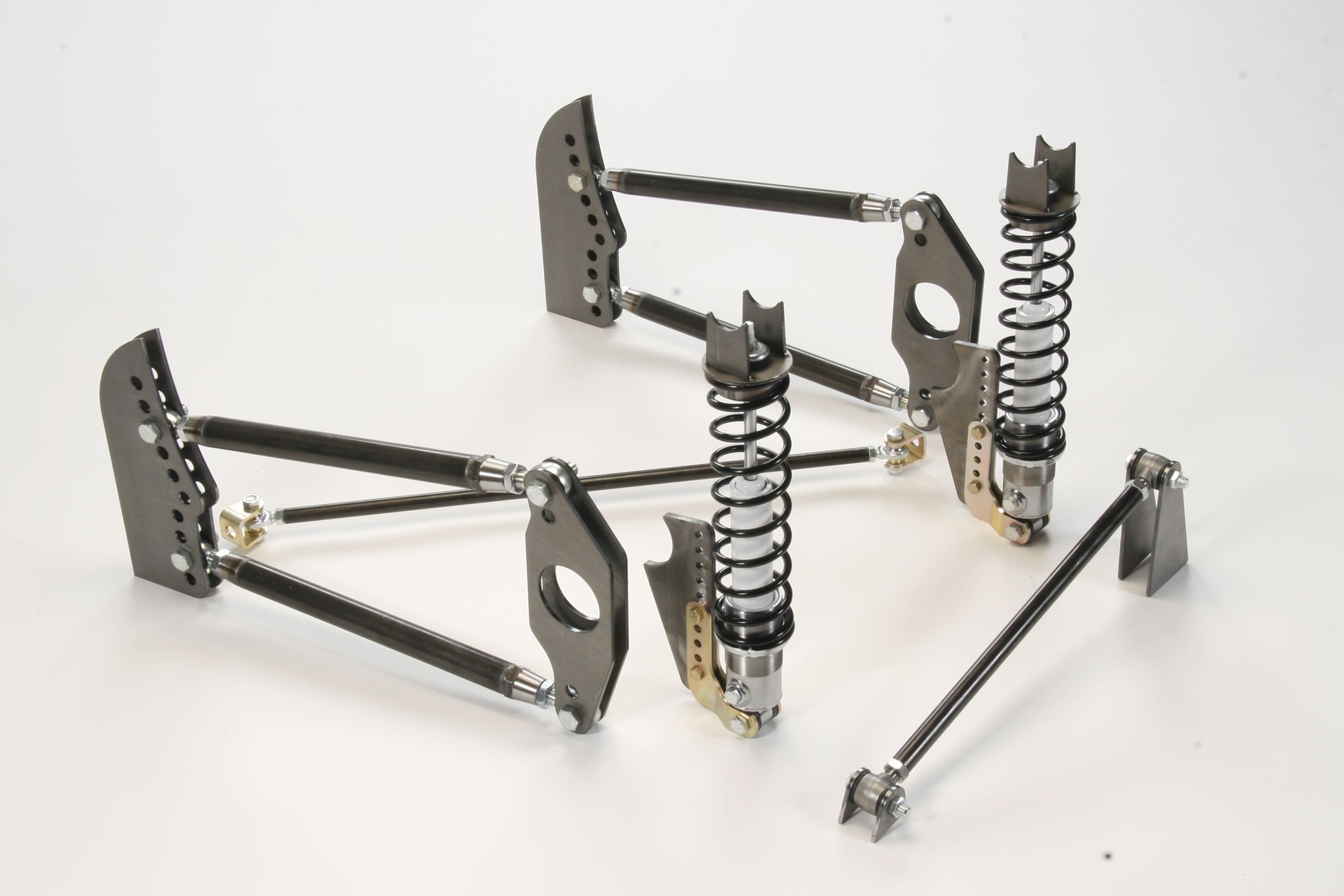

A Simple Overview of Rear Suspension Design From Leaf Springs to IRS
By Jeff Smith – Photography by Jeff Smith and the Manufacturers
When it comes to bad actor cars, most gearheads are all about making power and going quicker and faster. That places major emphasis on horsepower and torque but this also leads to the more challenging question of how to manage all that power and convert it into traction. This story will outline a basic understanding of the various rear suspension designs. Many enthusiasts gloss over these systems or merely follow whichever system seems to be currently popular.
As a true enthusiast, it’s important to understand how each of these systems function, what makes them different, and which one offers the best approach based on the performance goal. An optimal drag race rear suspension would be a crippling disadvantage trying to find bite coming off an autocross turn or on a road course.
We will look at the popular rear suspension designs with a simple overview of each. Because we must cram all these systems into a single story, this means we are forced to leave out a mountain of details. Think of this story as a smorgasbord or an ice cream taste test where you can quickly sample all the different flavors and then decide which offers the best one that suits your particular taste. You can then launch into a more detailed search into the system that best meets your goals.
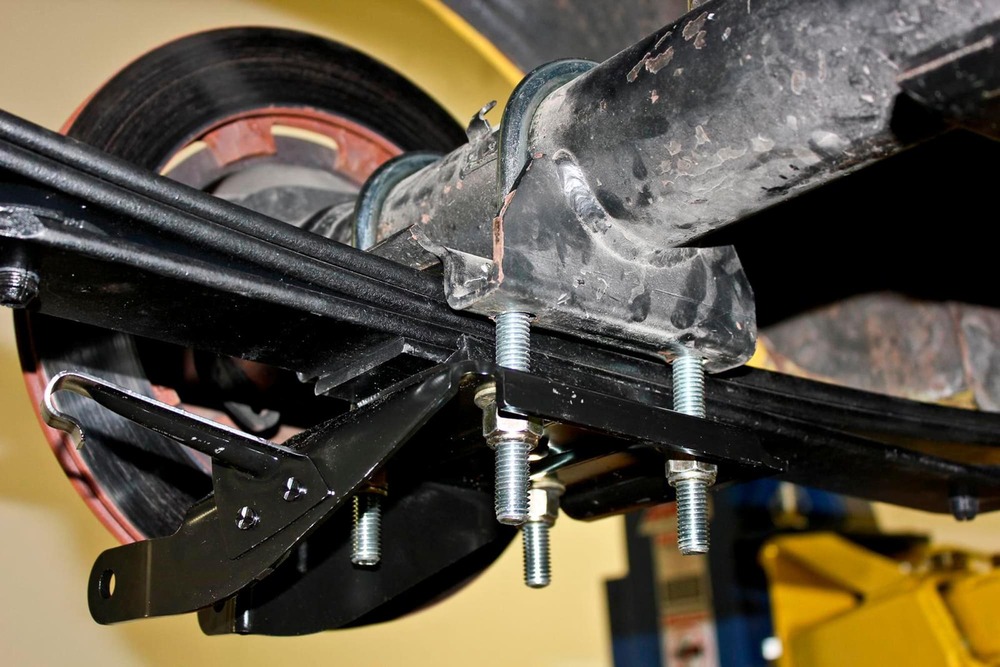
Leaf Springs

We’ll start with the simplest rear suspension that literally can be traced back to the 1700s when French carriage makers employed a flexible metal plate to cushion the ride that eventually evolved into the leaf spring. The modern automotive leaf spring is most often a multi-leaf configuration, but monoleaf springs are used, as with the ’67 Camaro.
The modern leaf spring combines multiple tasks into one component. The spring locates the rear axle housing in the vehicle, supports the weight of the rear half of the vehicle, while also providing suspension freedom of movement.
When power is applied to a leaf spring, the pinion gear attempts to climb the ring gear but is resisted because the rear axle tubes are attached to the spring. Torque is applied through the leading half of the main leaf spring, which can deflect it just behind where the spring eye attaches to the body. With hard acceleration from a standing start, this force can cause the main leaf to deform into an S shape. If enough torque is applied, the S shape eventually binds the spring, which violently forces itself back to its original shape, causing the rear tire to leave the road surface. This creates what is called wheelhop.
There are several time-honored solutions to prevent wheelhop. Chrysler long ago moved the mounting position of the rear axle on the spring to shorten the distance from the axle tube to the front spring eye. This effectively strengthens the leading side of the spring, which minimizes spring wrap and wheelhop. These cars are often also equipped with a pinion snubber that limits pinion travel and improves traction.
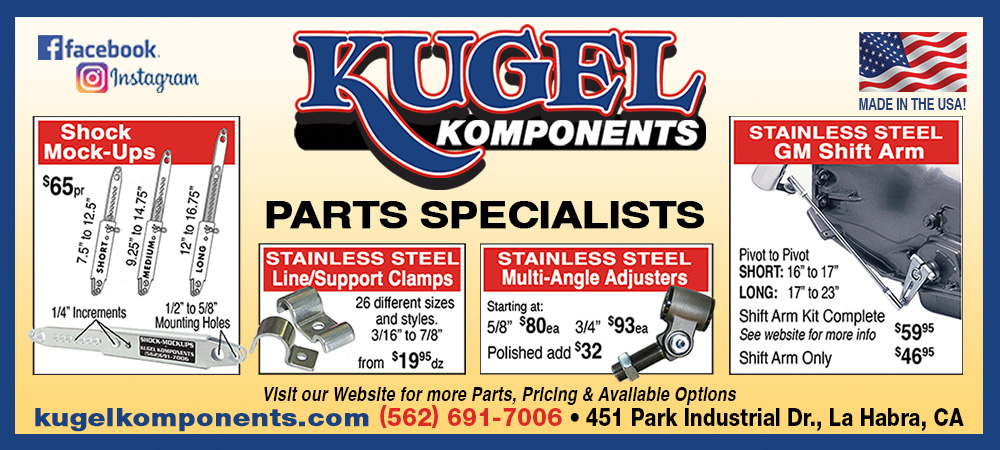
Read More : Giving a Well-Worn, 42-year-old Chassis a New Lease on Life
The classic traction bar solution for GM leaf spring cars was to bolt a rectangular steel tube to the leaf spring mount fitted with a rubber snubber designed to contact the forward part of the spring. The traction bar prevents spring wrapup but also binds the spring. This works adequately for straight line drag racing but creates essentially an infinite spring rate, which causes massive oversteer when power is applied when exiting a corner.
A far better solution is the CalTracs bar and its many variants. This design mounts a round tube link directly under the rear axle spring pad that extends forward to a mount directly below the front spring eye. This front mount includes three different mounting locations for the leading end of the bar. This device minimizes spring wrap while not binding so the spring functions normally when load is applied.
Instant Center
This is a good place to bring up the concept of the rear suspension’s instant center (IC). This is an imaginary point in space that functions as the location of the force driving the vehicle forward during acceleration. This is a complex arrangement that we will mention several times throughout this story, but it is beyond the scope of this story to delve into its many details. We suggest you read other technical pieces to become more familiar with how the IC affects traction during acceleration.
In a typical leaf spring application, the IC is often found at the front spring eye, although not in all cases. When a traction device like the CalTracs bar is applied, the torque is applied through the lower bar so that the IC is formed by extending imaginary lines forward that trace the position of the main leaf spring and the CalTracs lower bar. The IC can be changed by relocating the front mounting position of the lower bar. This offers tuning options that affect traction.
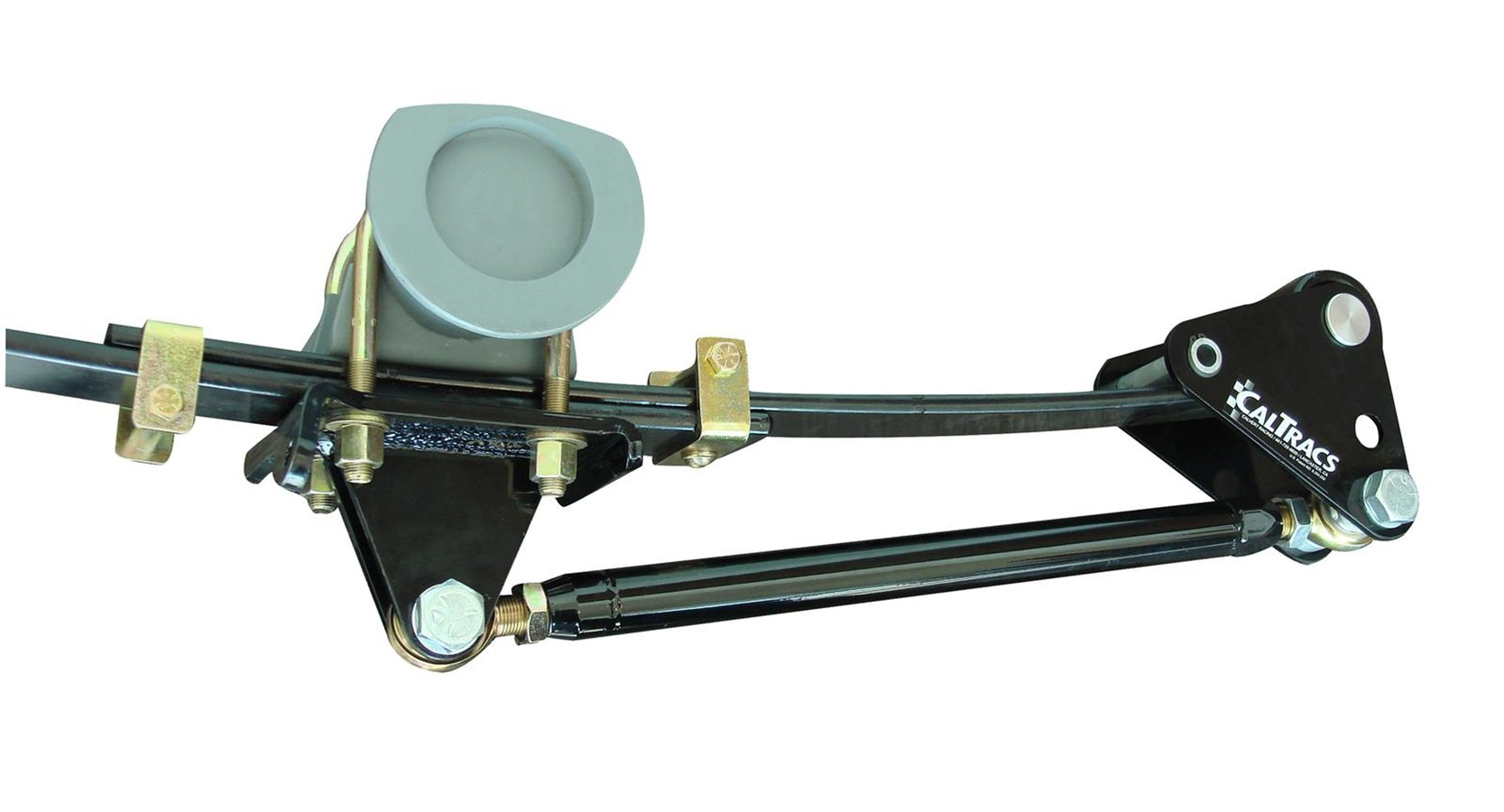
Coil Springs
Coil springs were a natural evolution of leaf springs, offering support for vehicle weight in a smaller, lighter package compared to bulky leaf springs. While smaller and lighter, coil springs do not locate the rear axle housing like leaf springs. This task must be performed by separate locating devices called trailing arms. The orientation of these trailing arms leads us into a variety of different rear suspension configurations.
Ladder Bars
From a simplistic viewpoint, the next rear suspension configuration is the simple ladder bar. This design has been popularized in drag racing rear suspension using a pair of triangle-shaped bars mounted between the rear axle and a frame crossmember. The advantage of a ladder bar suspension is the forward locating point in the rear suspension’s IC. This can be repositioned vertically to adjust the application of torque during the launch. However, a major disadvantage is that the IC point cannot be adjusted forward or backward in the car without physically changing the length of the ladder bar.
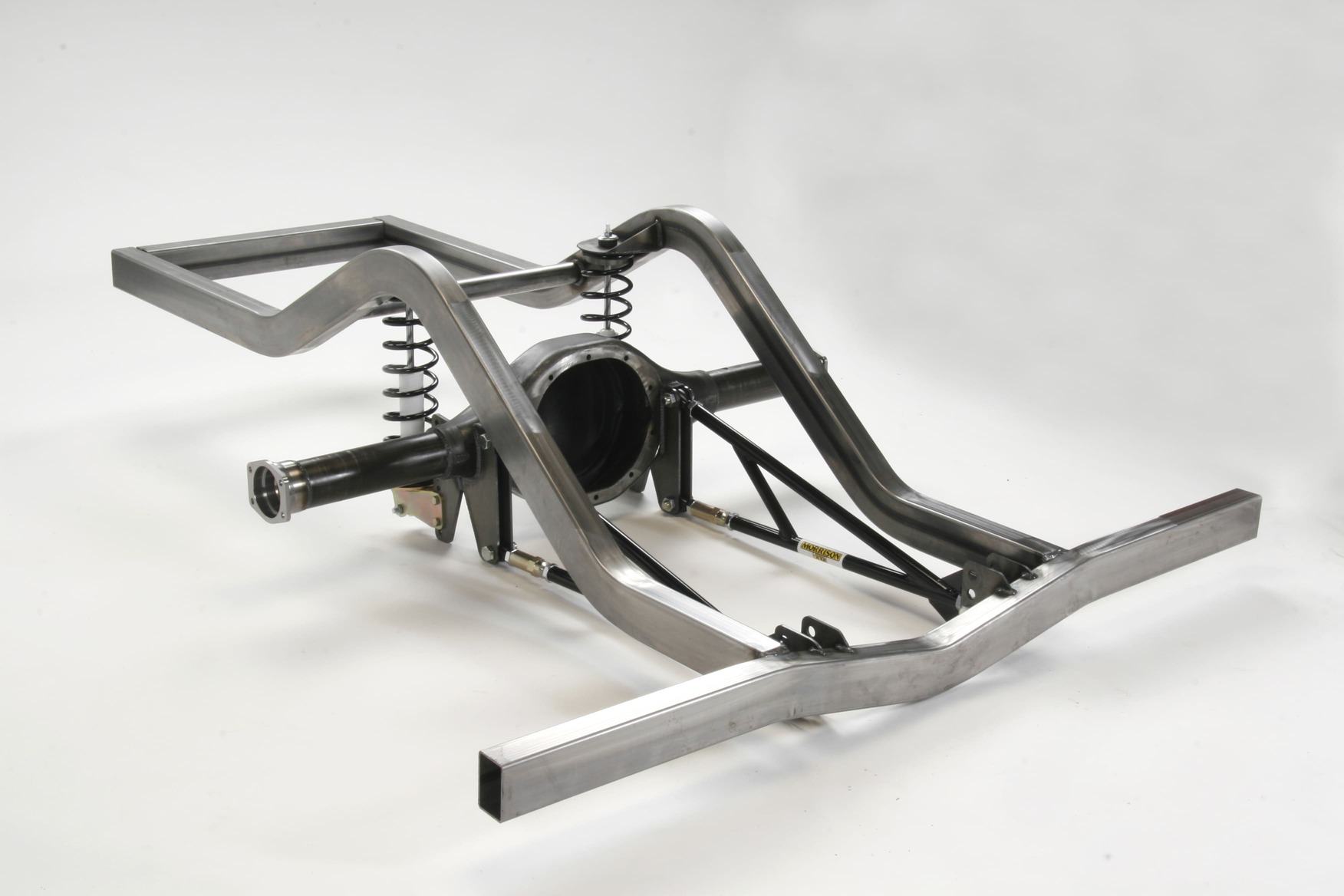
A pair of ladder bars creates two sets of parallel bars that form a basic rectangle around the rear suspension. Unfortunately, this configuration offers no lateral (side to side) control over rear axle movement. This means ladder bars (and other systems we’ll address next) require some type of separate control mechanism that will minimize lateral movement.
More Chevy Suspension : Dragstrip Shock Tuning
There are multiple solutions to solve this issue but the simplest is a track bar that laterally connects the front of one lower arm with the rear link of the opposite lower bar. This forms a right triangle in between the two parallel lower arms. This triangle prevents unwanted lateral movement by virtue of the right-angle connections. Track bars are fine for straight ahead drag cars but place extremely high loads on the spherical joints during cornering so these track bars should not be used in street or high-force cornering applications like road racing or autocross. A better solution is either a Panhard bar or Watt’s linkage that will be detailed later.
Parallel Four-Link
The parallel four-link rear suspension is generally considered as an upgrade to the simple ladder bar. The parallel four-link uses lower control arms to position the rear axle in the car and are connected to the lower portion of the rear axle. The upper arms are connected over the top of the rear axle and also connect to the frame with shorter tubes. The shorter tubes are used to help in packaging the system under the existing floor. The upper arms are used to maintain the pinion position during acceleration and deceleration.
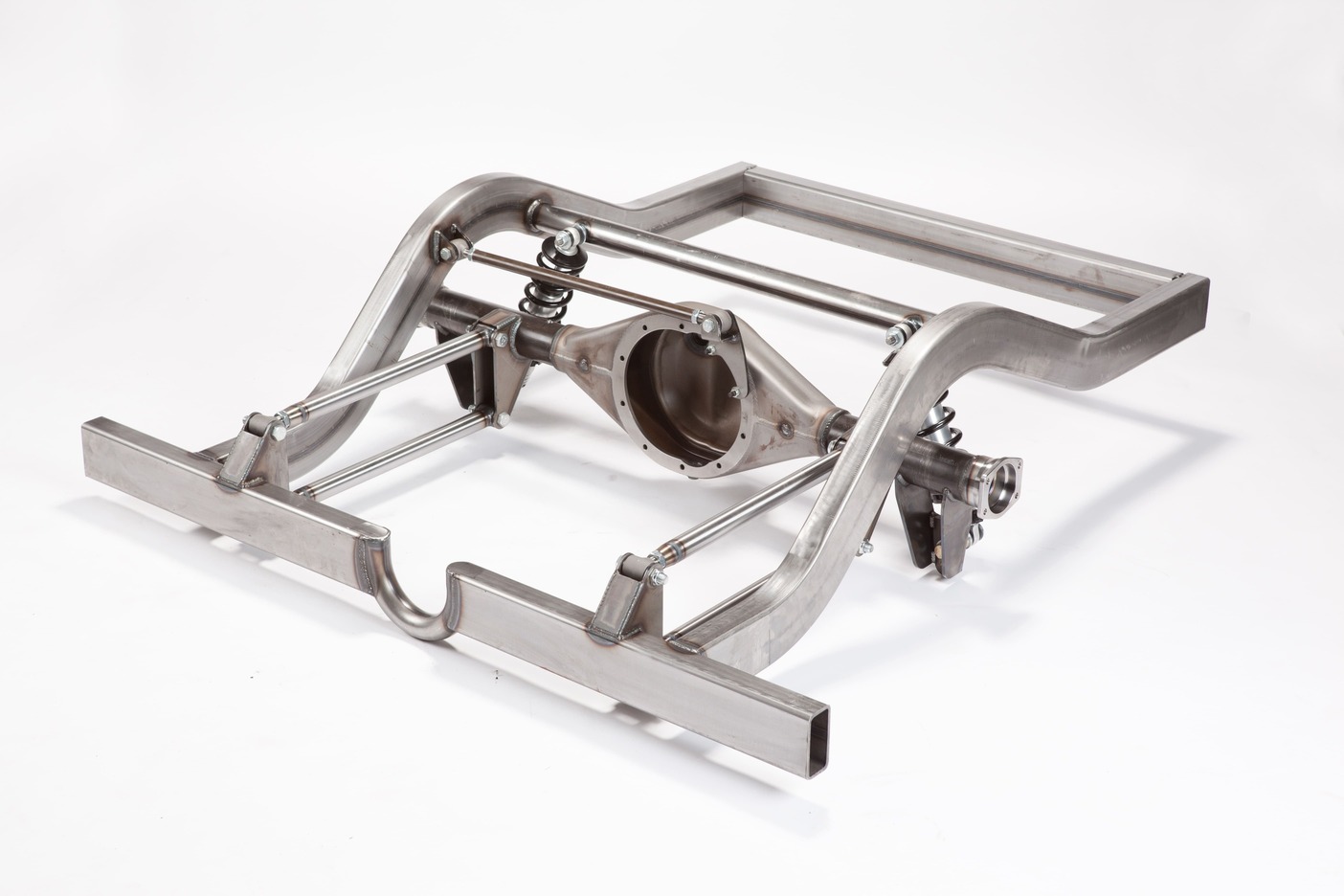
It’s also important to understand the dynamics of what happens to these arms under acceleration. As torque is applied to the rear axle, the pinion tries to climb the ring gear, this imparts tension on the upper control arms while simultaneously pushing forward on the lower trailing arms. The motive force to drive the car forward is through the lower trailing arms.
As mentioned, this four-link orientation is similar to the ladder bar in that it also requires some way to laterally locate the rear axle. Various solutions have been offered to provide this control, including the Panhard bar and the Watt’s linkage.
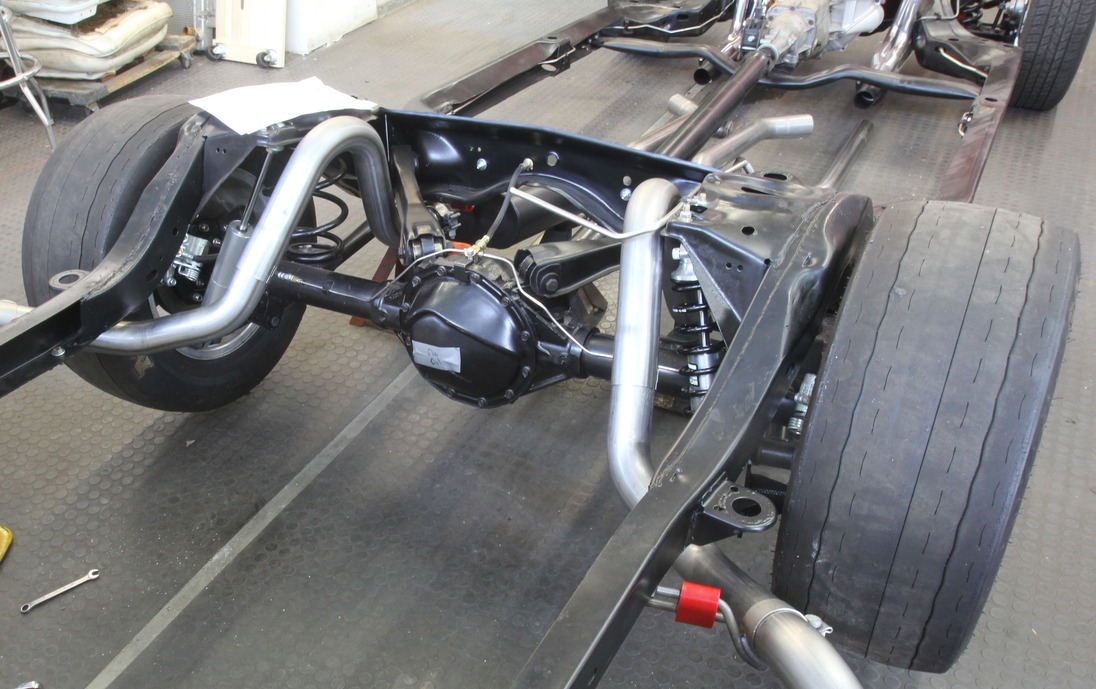
A slight variation of the parallel four-link is a popular OE application called the non-parallel four-link. This system uses a pair of parallel lower trailing arms but splays the upper arms outward from the rear axle to create a triangle. This triangle laterally locates the rear axle and eliminates the need for a track bar, Panhard, or Watt’s linkage. You can find an OE example of this suspension in ’64-72 Chevelles and many subsequent GM cars.
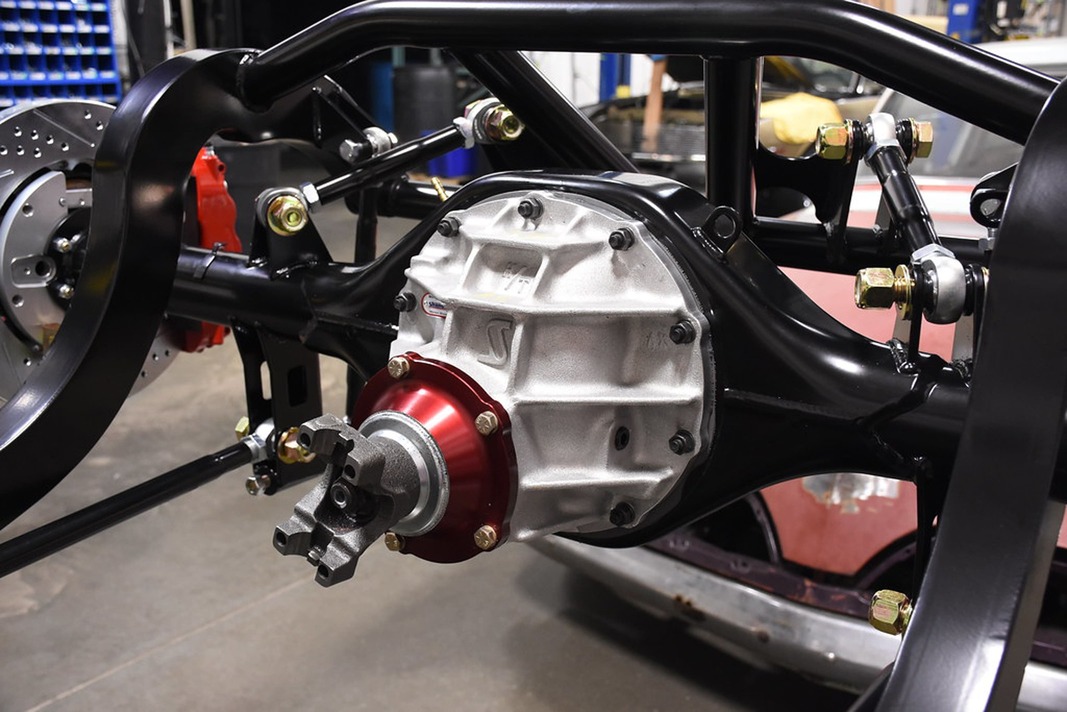
One difficulty or limitation of the non-parallel four-link system is that if the car is dramatically lowered or raised, the short upper lengths can easily go into bind, which wedges the rear suspension in place. In severe cases this can cause the upper factory trailing arms to buckle and fail. However, a properly designed aftermarket non-parallel four-link using spherical joints instead of bushings offers multiple advantages while maintaining a very simple configuration.
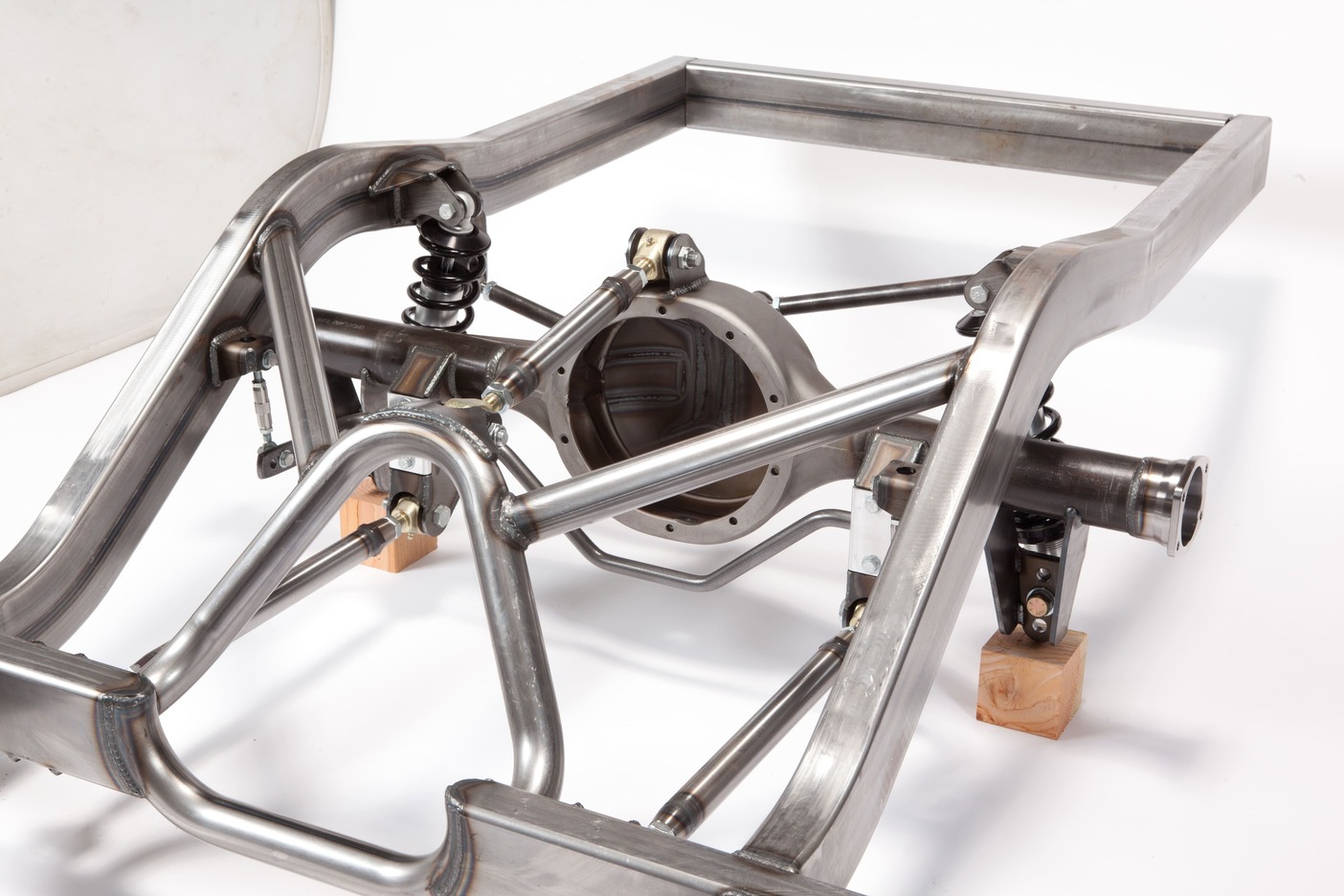
One variation of the parallel four-link is the three-link system that eliminates one of the upper control arms, leaving a single trailing arm usually either in the center or on one side of the axle housing. An early example of this is the X-frame ’58-64 B-body Chevrolet. In a racing situation, three-link rear suspensions are favored in some high-powered dirt track applications because this arrangement allows the rear axle to articulate under a huge range of suspension travel. Again, this style of suspension demands some type of lateral control mechanism, such as a Panhard bar or Watt’s linkage.
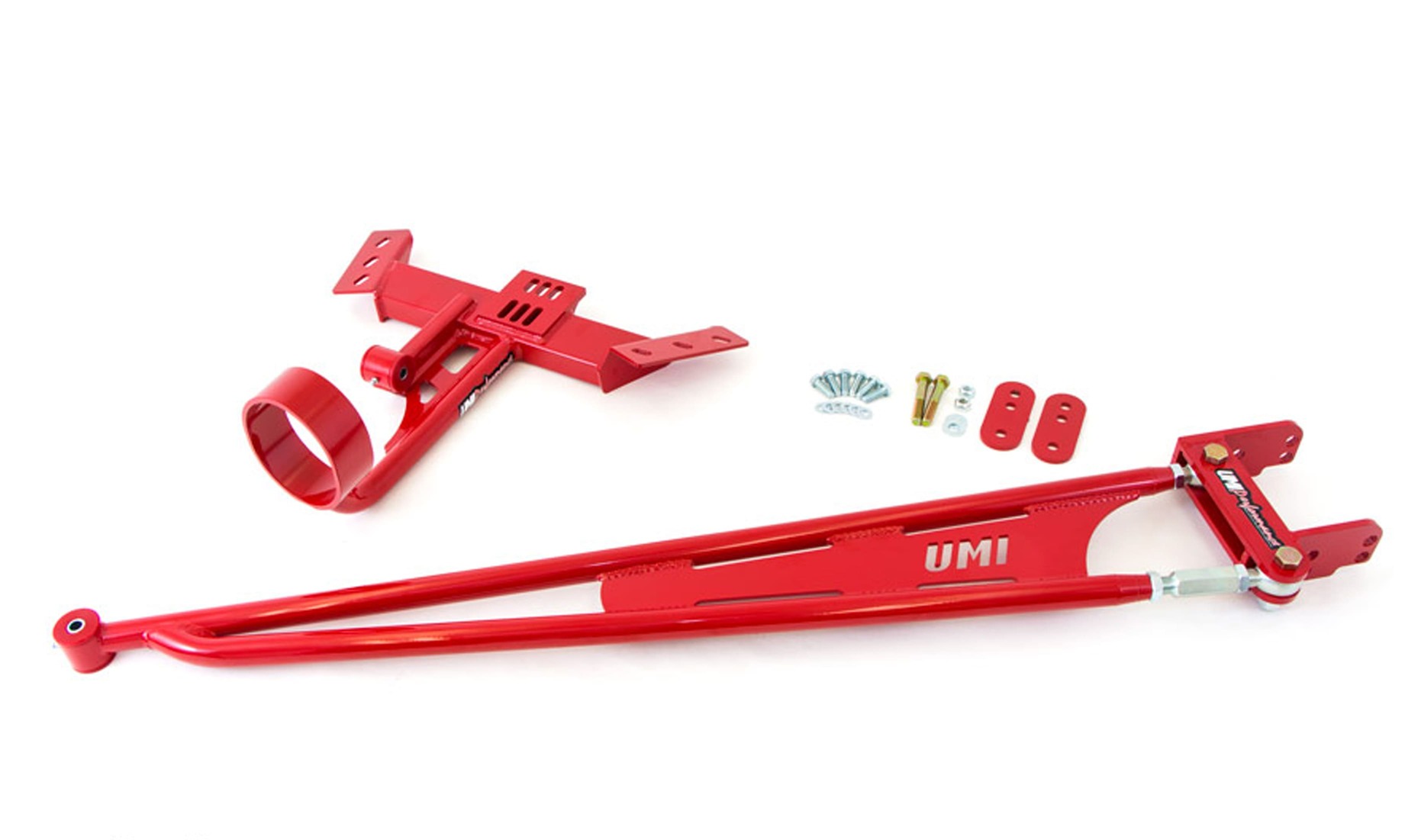
This is a late-model variation of the three-link system first popularized in GM cars with the Buick GNX and also in the third- and fourth-generation F-body Camaro/Firebird. The torque arm is similar to a four-link using twin parallel lower trailing arms connecting the rear axle to the frame of the vehicle. But that’s where the similarity ends. In production cars like the Camaro, the upper trailing arms are replaced with a long, stamped arm that connects the pinion of the rear axle to a mid-mounted crossmember usually located near the tailshaft of the transmission.

This type of suspension is useful when faced with space limitations where there is minimal room for both upper control arms and a full exhaust system. Aftermarket torque arms offer the advantage of changing the mounting position for the torque arm, but this is usually limited to vertical options. The location for the IC for these suspensions is found by extending an imaginary line from the rear lower control arm mounting point through its front mounting point to where it intersects with a perpendicular line that crosses the front mount location of the torque arm. This can be altered by changing the lower control arm rear locating point.
Panhard Bar and Watt’s Linkage
Earlier we promised to explain the use of both axle locating devices. When a parallel four-link suspension is employed for a street-driven vehicle, substantial components are needed to locate lateral or sideways movement of the solid rear axle assembly. The simpler of these two devices is the Panhard bar that uses one location point mounted on the rear axle and the other positioned on the opposite side of the rear axle bolted to the frame.

As the rear axle moves up and down in suspension travel, the Panhard bar will produce lateral movement in the shape of an arc. It’s important that the Panhard bar be as long as possible in order to scribe the widest arc during rear suspension travel. This will minimize this lateral movement of the housing under the frame during rear suspension travel.
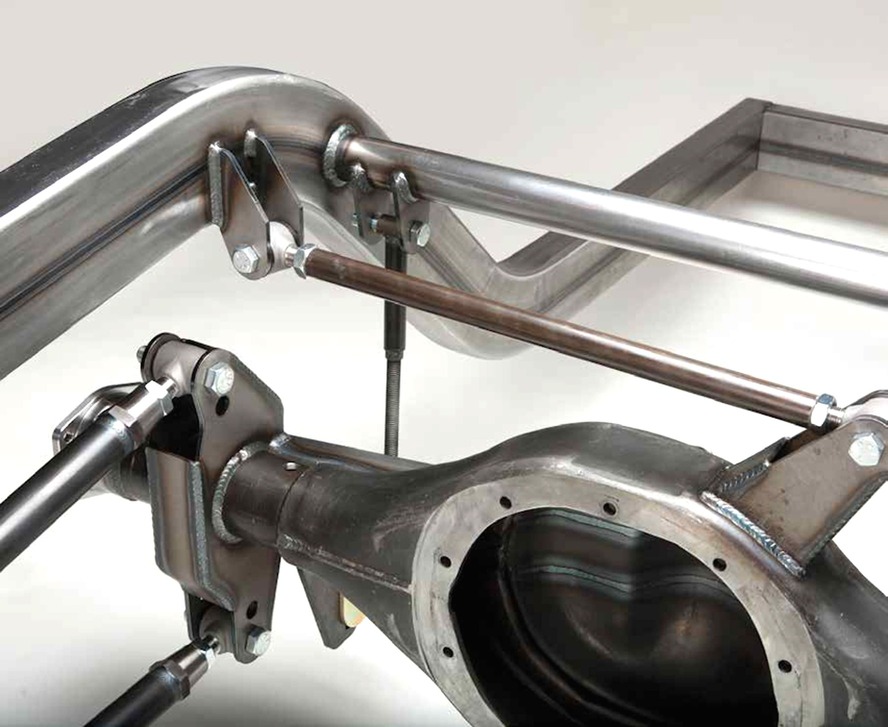
A Watt’s linkage accomplishes the same task of limiting rear axle lateral movement but employs a slightly more complex arrangement to do so. The Watt’s linkage uses a pair of parallel rods with one end connected to the frame and connected to a central pivot point often located behind the differential. The system should be designed so that the two links are parallel to the ground with the vehicle at ride height. This allows rear suspension travel with a minimum of lateral movement. The negative to this arrangement is its complexity and additional weight, much of which is added to the unsprung weight of the rear axle assembly.
Independent Rear Suspension (IRS)
For years enthusiasts have argued the relative advantages of an independent rear suspension (IRS) compared to a solid rear axle assembly. Rather than add to this cacophony, we will merely address the basic function of an IRS. As with an independent front suspension, there are inherent advantages to allowing each rear tire to move independently of its partner. Early attempts at creating independent rear systems were called swing arm suspensions that pivoted only from the inboard mounted side of the system as with early VWs or early Corvairs. During high-speed cornering, major suspension movement created huge camber changes to the rear wheels and tires.
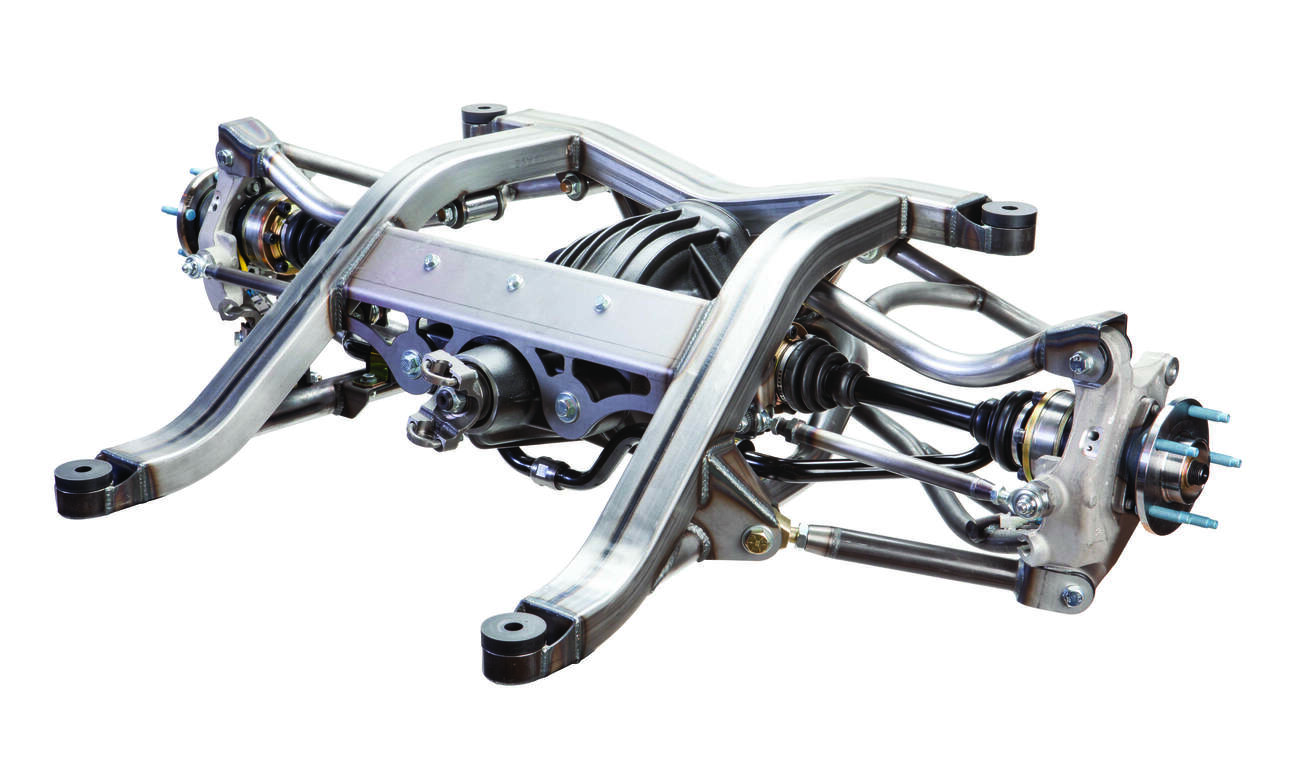
A true IRS allows the axle shafts to pivot at both the inner and outer points with spindles locating the outer hub with lateral control arms. The earliest Chevy IRS was first used in the ’63 Corvette and has been improved over the years into a highly refined system. Even the current-generation Camaro now enjoys an IRS. The major advantage to IRS is much more control over wheel motion, which is a shorthand description of the combination of changes to caster, camber, and toe for each rear tire as it travels through suspension motion. An optimally tuned IRS can create ideal wheel motion for improved handling. An example of this is the ability to easily set rear camber and toe angles that cannot be easily accomplished with a solid rear axle.
There are many more considerations to IRS advantages that go much further than this abbreviated look can allow. The only major disadvantage to converting a solid rear axle car over to IRS is the cost.
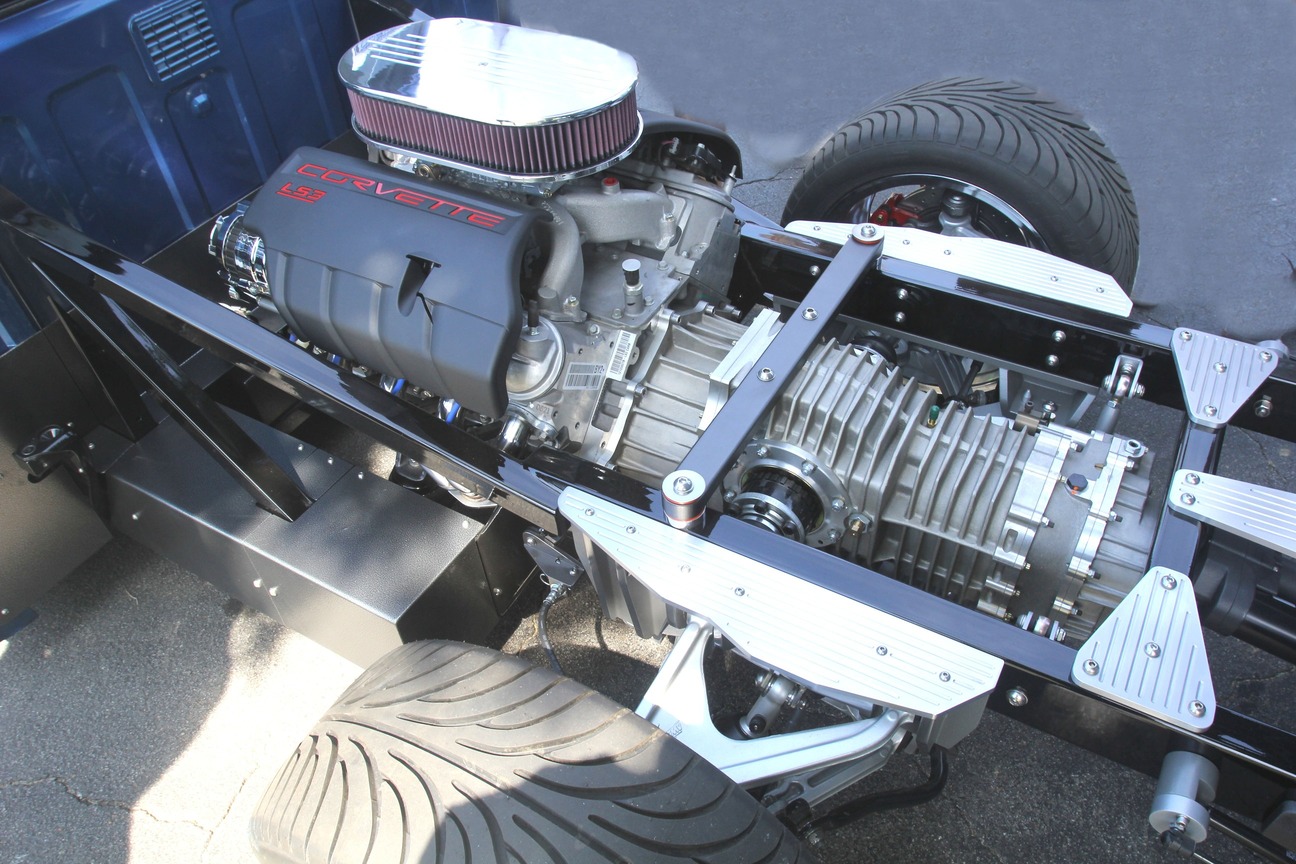
As performance cars become more sophisticated and torque and horsepower continues to increase at a phenomenal rate, this only increases the need for awareness as to the rear suspension needed to help manage all this newfound power.
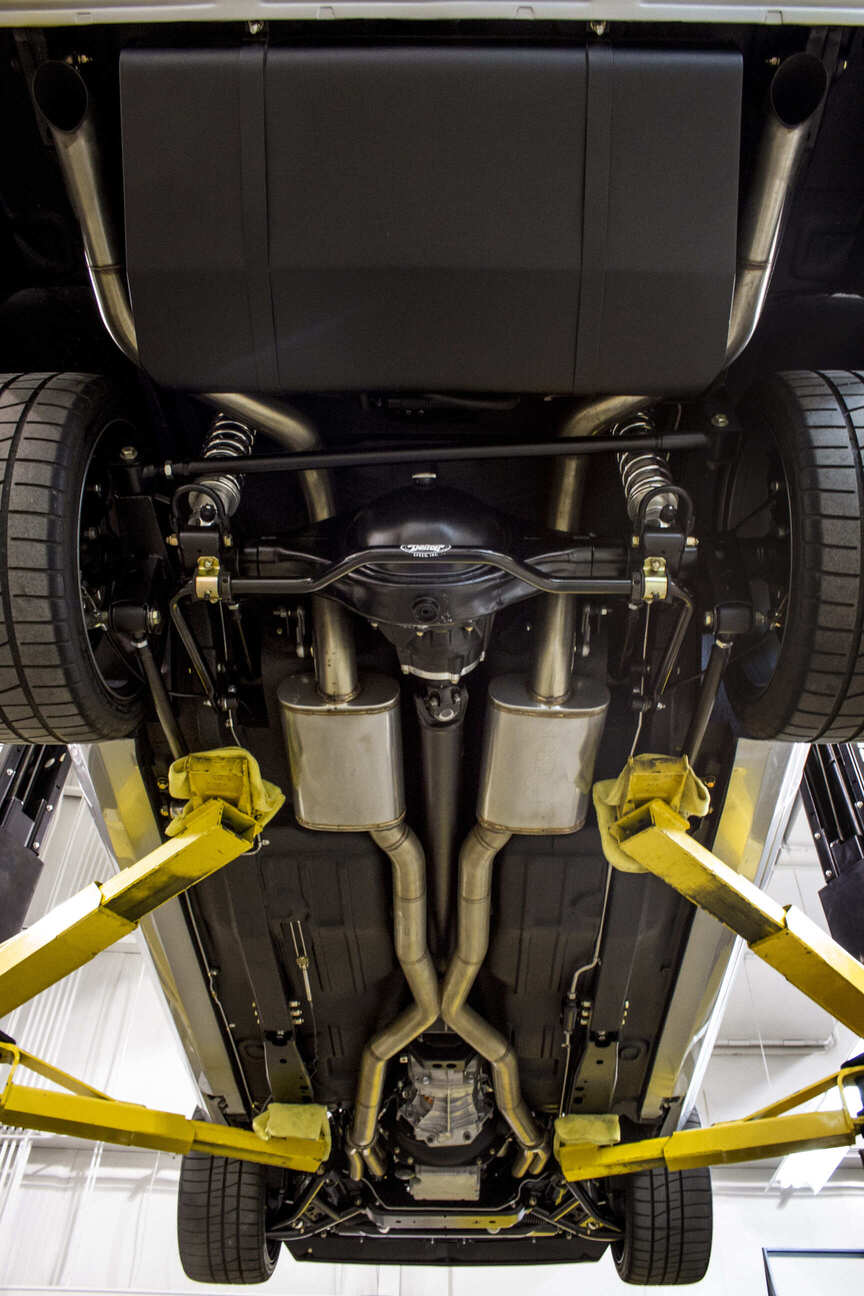
Art Morrison Enterprises (866) 808-4759 artmorrison.com
Chris Alston’s Chassisworks (888) 388-0297 cachassisworks.com
Detroit Speed (704) 662-3272 detroitspeed.com
Dobbertin Performance (315) 683-0022 http://rick486.wixsite.com/dobbertinperformance
Heidts Hot Rod and Muscle Cars (800) 841-8188 heidts.com
Roadster Shop (847) 949-7637 roadstershop.com
Scott’s Hotrods ’N Customs (800) 273-5159 scottshotrods.com
Schwartz Performance (815) 770-0751 schwartzperformance.com
UMI Performance (814) 343-6315 umiperformance.com

Related Articles
Search our site.

Pro Touring 1970 Z28 Chevy Camaro
Proper method to bending and flaring brake lines, original blue patina 1969 chevy nova sleeper, coverage of the 26th goodguys rod & custom association summit racing nationals presented by ppg, custom 1969 camaro pro touring restomod, 1957 chevy gauge upgrade.

Pro Touring 1970 Chevy Chevelle
1957 chevy bel air ls engine install, bbt built 1969 chevy chevelle pro touring restomod, chevy concepts – 1969 camaro convertible, old-school 327ci small-block chevy engine, how to choose the right restoration shop for your project.

- Advertising
- Privacy & Terms

Resources for the amateur car designer and builder
- Building Your Own Car
- Learning Car Design and Construction
- Choosing A Car Type
- Designing Your Own Car
- Download Design Aids
- Sanctioning Bodies
- Autocross/Solo (Beginner)
- Autocross/Solo (Modified)
- Autocross/Solo (Advanced/Prepared)
- Custom Street/Import Tuner
- Drag Racer (Prod/Street/Hot Rod)
- GT / Grand Touring / Gran Turismo
- Rally / Rallycross
- Rider Mower
- Stock Car (Production/Showroom)
- Street Rod / Hot Rod
- Touring / Turismo Race Car
- Truck (Custom Off-Road)
- Bar Stool Racer
- Drag Racer (Junior Dragster)
- Drag Racer (Scratch-Built/Dragster)
- Dune Buggy/Sand Buggy/VW
- Formula (SAE/Student/Ford/F1000)
- Formula (Winged SAE/Student/Ford)
- Kart (Sprint/Oval/Dirt)
- Midget (Full Size)
- Midget (Quarter)
- Sport Racer/Sports Prototype
- Sprint Car (Full Size)
- Sprint Car (Micro)
- Stock Car (Scratch-Built/Late Model)
- Supercar / Sports Car
- Truck (Off-road Racing)
- Truck (Scratch-Built)
- Car Handling
- Car Suspension
- Car Chassis
- Car Powertrain
- Car Aerodynamics
- Car Ergonomics
- Quick Start Learning Guide
- Car Design and Build Books
- Articles and Reviews
- Car Design/Racing Magazines
- Car Design/Building Sites
- Car Modeling/3D
- Aerodynamic Design and Simulation/CFD
- Chassis/Structural Design/FEA
- Suspension Design
- Project/Process Management
- Miscellaneous
Car Suspension Basics, How-To & Design Tips ~ FREE!

Car Suspension Basics, How-To & Design Tips
The suspension on a vehicle serves multiple purposes:
- It provides a stable platform from which to control the vehicle
- It provides a way to isolate the chassis and driver from the shocking jolts that the tires experience going over anything but a glass-smooth surface.
- It provides a way to keep all the vehicle’s tires in contact with an uneven surface.
- It provides damping of oscillations that rubber tires, springs and uneven surfaces naturally create.
Many versions of suspension have been created over time to resolve deficiencies, but in general they all seek to control the movement of the tires in three ways:
- Laterally – Controlling side-to-side movement
- Longitudinally – Controlling forward/backward movement
- Vertically – Controlling up and down movement
Suspensions accomplish this using links and structures that locate the wheels/tires in a specific “geometry” relative to the vehicle. The geometry dictates the behavior the tires/wheel and chassis exhibit when accelerating, braking and turning.
Suspension Components
Let’s have a look at the components that make up a suspension.
As the first point of contact with the road, the tires work in conjunction with the suspension geometry and weight transfer dynamics to provide grip. Many different types of tires exist, but every tire relies upon its contact patch with the road (Shown in diagram T1 below) to create the friction needed. Generally, the larger the contact patch, the larger the amount of friction created.
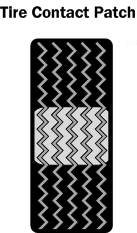
Diagram T1. Tire contact patch which contacts the road surface
The grip provided by a tire is also based on the coefficient of friction (Cf) of the rubber compound and the tire’s construction (Radial/bias). This coefficient indicates the lateral grip the tire is capable of providing for a given weight being placed on it. A Cf of 1.0 means it is capable of providing 1 lb of lateral grip for 1 lb of vertical load on it.
Racing slicks (tires with no tread) are very high Cf tires, in the range of 1.0 or more. Street (treaded) radials, on the other hand, rarely even approach a 1.0 Cf. If you were to place 500 lbs weight onto a tire with a Cf of 1.0, you could expect 500 lbs (actually a little less) of lateral grip. Without aerodynamic aids to add to apply further weight to the tire, the vehicle could almost achieve a 1G turn.
The wheel is what the tire mounts on and each type of wheel has its own particular characteristics depending on its width, diameter and construction materials.
The primary types of wheels used on cars are alloy and steel.
Alloy wheels can be constructed to very minimal weights, as alloying materials such as aluminum and magnesium can be used. They are also generally much more expensive than their steel counterparts, but they also lack the dent resistance of steel wheels. An alloy wheel, when struck by a curb will sometimes shatter and crack. Nonetheless, for most motorsports series and street vehicles, alloys are the choice.
Steel wheels can also be constructed to very low weights and their cost is quite a bit less than the alloys, due mostly to lower cost construction. Steel wheels are deformable when struck, and will usually allow air to leak out of the tire, as opposed to shattering. NASCAR and the general stock car scene use steel wheels due to the extreme forces encountered.
Wheels, aside from their width and diameter, have an important design characteristic called “Offset”.
In the wheel/tire cutaway diagram WH1 below, the sample wheel shows a red line that represents the mounting face for the wheel—the face with the lug holes that we bolt onto the hub of the vehicle.
The yellow dotted line represents centerline of the wheel and “Zero offset” from the centerline. If we move the mounting face toward the vehicle, as show on the left in the diagram, we create “Negative Offset”. If we move the mounting face away from the vehicle, as shown on the right in the diagram, we would create “Positive Offset”
Offset is important in relation to the design of the upright/knuckle, as it determines scrub radius (see more info below).
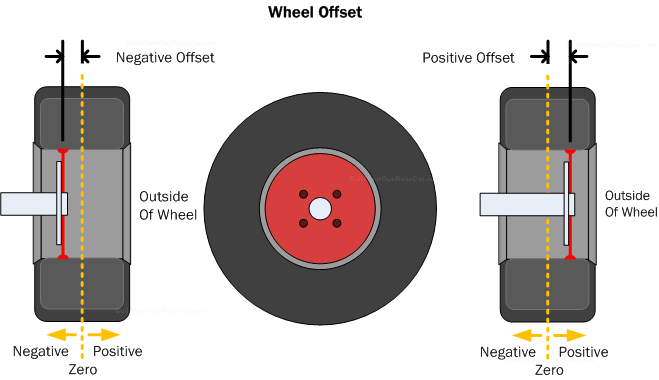
Diagram WH1. Wheel offset is the distance, positive or negative from the wheel center line when viewed from the front.
It goes without saying that while the gas pedal on your car is the preferred pedal to push, the brakes are of vital importance as well.
Two types of brakes are available—Disc and drum. Both types use friction to turn the kinetic energy of the moving vehicle into heat. What makes one type of brake better than the other is the effectiveness of each type in dissipating or shedding the heat generated. Too much heat and the brake pad/shoe material will generate less friction, leading to what is termed “Brake fade”.
The disc brake, shown in diagram B1 below, produces more reliable stopping power under racing or hard-driving conditions because its rotor (the surface against which the brake pad generates friction and heat) is exposed to the air flow. This dissipates heat to the open air quickly.
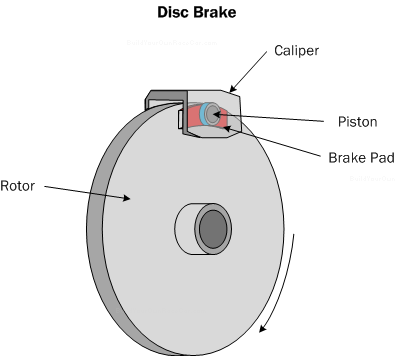
Diagram B1. Disc brake
A disc brake system works as shown in figure B2 below. The driver presses the brake pedal, which forces a piston in the master cylinder to compress the brake fluid (Yellow). The fluid runs inside a brake line to the caliper (Green) where two pistons (Blue) with attached brake pads (Red) are forced against the spinning brake rotor (Grey), generating friction and slowing the brake rotor and its attached wheel.
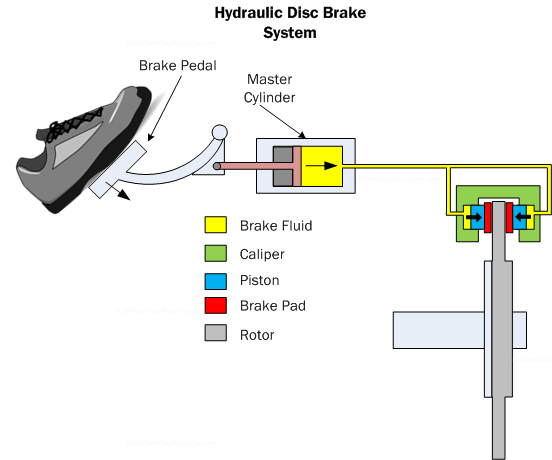
Diagram B2. Hydraulic disc brake system showing a cross-section of the master cylinder and caliper.
The drum brake, shown in figure B3 below, utilizes semi-circular shoes that are forced against the inside of the brake drum by a slave cylinder.
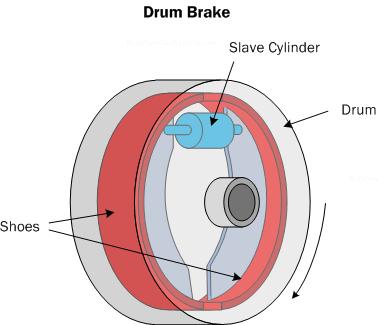
Diagram B3. Drum brake
With the brakes released, there is a small air-gap space between the shoes and the drum as shown in figure B4 below.
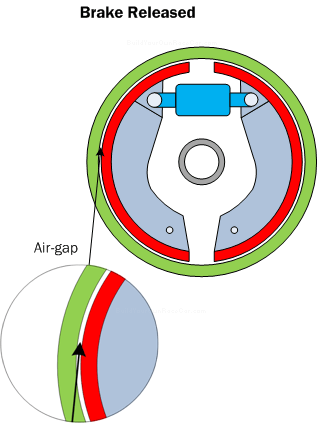
Diagram B4. The drum brake, when released, leaves an air gap between the shoes and drum.
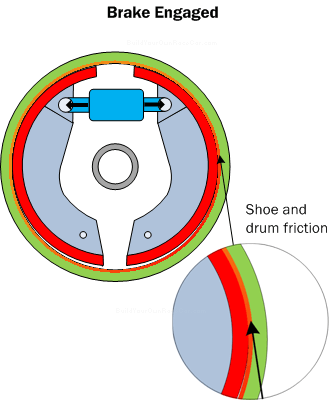
Diagram B5. The drum brake, when engaged, pushes the shoes against the drum creating the friction that turns kinetic energy into heat energy.
With the shoes engaged as shown in figure B5 above, the brake creates high levels of stopping power through large amounts of friction. However, because the drum is “closed” compared to the exposed rotor on the disc brake, more heat is retained, which leads to brake fade sooner.
Diagram B6 below shows a drum brake in a hydraulic system. The driver presses the brake pedal, which forces a piston in the master cylinder to compress the brake fluid (Yellow). The fluid runs inside a brake line to slave cylinder (Blue) which contains two pistons (Pink). These pistons are attached to the brake shoes (Red/light blue). The pistons force the brake shoes against the drum (Green), generating friction and slowing the brake drum and its attached wheel.
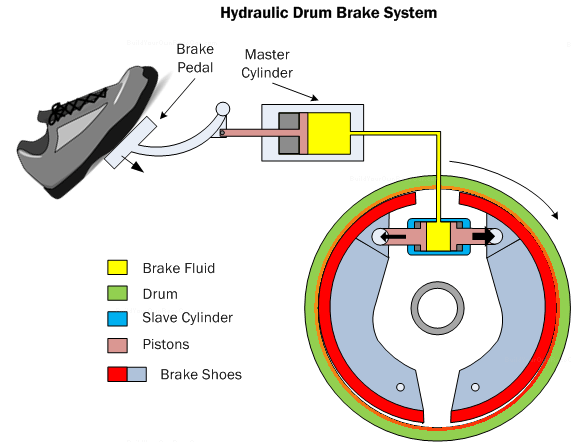
Diagram B6. Hydraulic drum brake system showing a cross-section of the master cylinder and drum assembly.
Drum brakes are cheaper to manufacture and are generally used in conjunction with a live axle. However, disc brakes are the preferred for any type of race or sports car where they can be fitted as they have less mass and better cooling.
Suspension Design Tips (1/4)
Minimize unsprung weight.
Unsprung weight , or the weight comprised by tire, wheel and suspension affects how well the tire follows the bumps and dips in the road surface. Using lighter wheels, tires, and suspension components will reduce the weight. The weight of these suspension components by itself is not so critical as the ratio between the vehicle’s sprung weight ( chassis , driver, engine, etc) and the unsprung weight . The lower the unsprung weight in relation to the sprung weight, the easier it will be to control the tire/wheel via the springs, dampers (shocks) and anti-roll bars.
You are using an outdated browser. Please upgrade your browser to improve your experience.

- Product Lines
- Shoxs Suspension Seats
- Kinetix Impact Monitoring
- Accessories
- Military / Professional
- Recreational
- Seat Selection
- Custom Engineering
- Human Factors
- Performance Testing
- Whole Body Vibration
- About Shoxs
- Impact Science
- United Safety & Survivability Corporation 101 Gordon Drive Exton, PA 19341, United States
- 610-265-3610
- [email protected]
You have no items in your cart, add some on the products page .
- Find a Dealer
- 2024 Catalog
Suspension Travel
Shock size matters, more suspension travel results in a smoother ride.
Imagine a car speeding towards a brick wall. The average force (and acceleration) required to bring a moving body to rest is inversely proportional to the stopping distance. The ability of a shock-mitigating device to lessen an impact and ensure a smooth ride is tied to its stopping distance. It’s the equivalent of gently applying the brakes on the car, allowing it to roll to a halt over some distance.
Acceleration: Defined
We gain further insight by considering the definition of acceleration: the rate of change of velocity with respect to time. When a boat collides with a wave it undergoes a velocity change due to its motion relative to the water’s surface, and so the acceleration will depend on the size of that change and inversely depend on the time over which it occurs. This suggests the two main approaches to lowering impact severity: reduce the impact velocity or increase the time duration of the event.
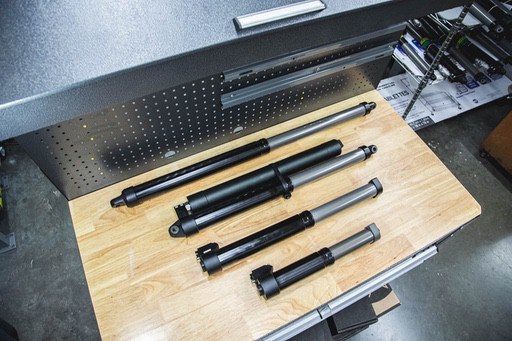
Impact Factors on the Water
On the water, a boat’s hull design, speed, and the sea-state are the dominant factors that dictate the velocity change during a wave slam. This change is thus reduced by improved hull design, slowing down, and avoiding poor conditions. These preventative measures lie at the heart of any shock-reduction strategy, but impacts cannot be eliminated entirely. In certain cases, speed cannot be reduced, waves cannot be avoided, and even the most experienced operator can be caught off-guard.
Milder Rides
Shock mitigating equipment is designed to increase the time duration of each impact. The longer it takes to undergo the impact velocity change, the smoother the ride will be, and adding suspension travel to a shock-mitigating device is a sensible way to achieve this. It’s akin to giving the imaginary car more braking distance before the wall.
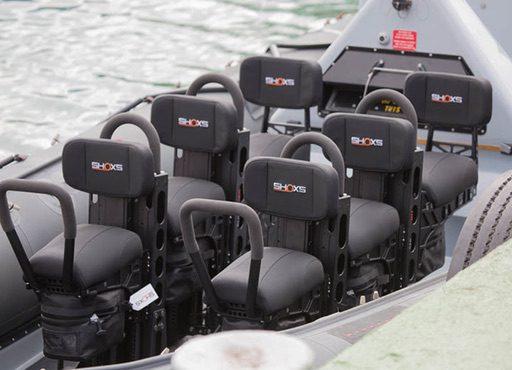
Comparing Suspension Travel Lengths
A longer deceleration leads to lower average forces. This explains why a 1” platform of vibration-mitigating foam is inferior to a 4” travel suspension system when it comes to mitigating shocks. Likewise, a 4” travel suspension will be outperformed by its 10” counterpart. The principle applies to impacts in any direction, including lateral. If only a short suspension travel distance is provided, a proportionate level of shock-mitigation can be expected.
Other Considerations
Of course, there are space and weight limitations on any boat, and ergonomics must be a top priority. Operators must interact with controls, maintain a low profile, and avoid sacrificing their sightlines. But when it comes to shock-mitigation, bigger really is better, and long-travel suspensions will yield the best results.
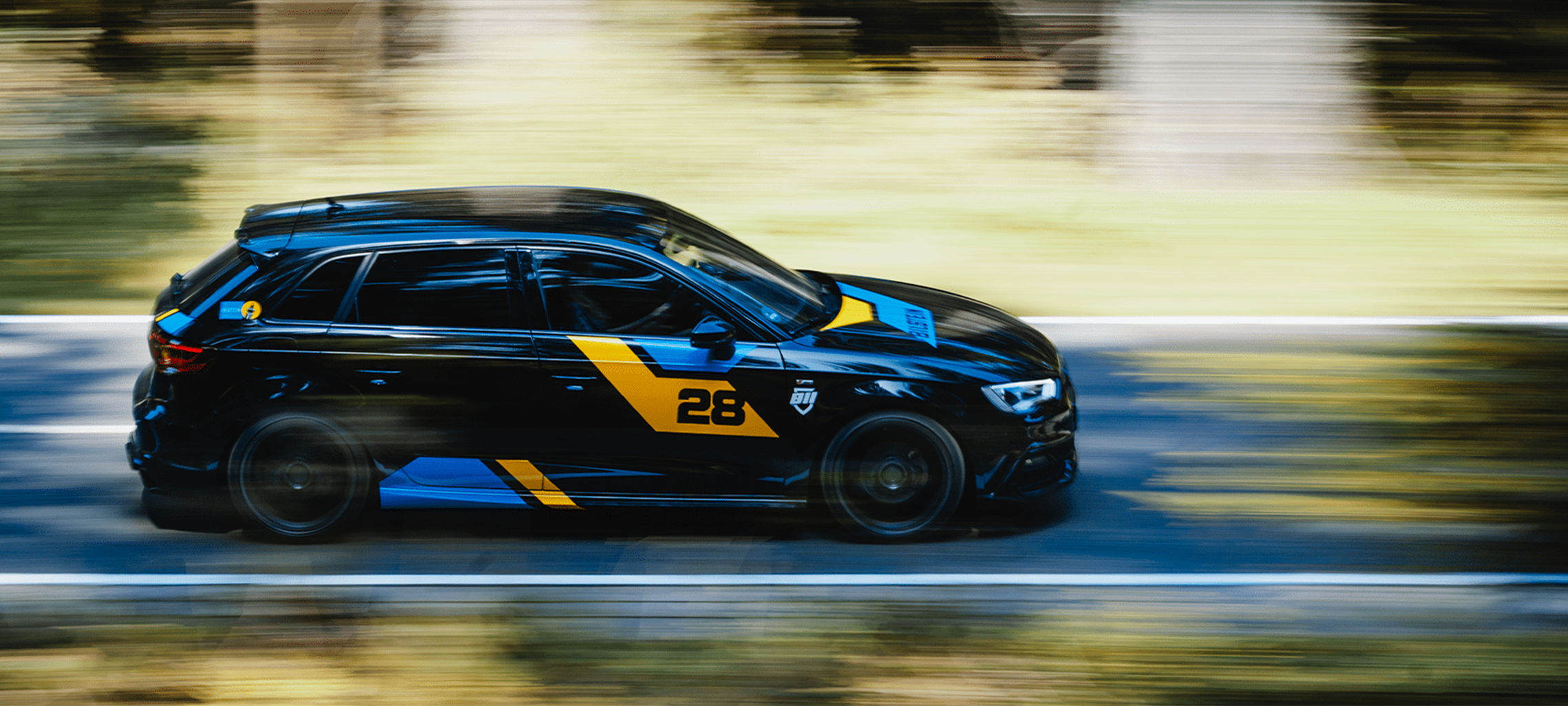
What is a sports suspension? The big overview and guide
Sport suspension refers to a suspension in which the combination of springs and shock absorbers is tuned more sportily than is usual for a standard suspension. This ensures better roadholding, especially in bends and when driving at high speed.
The most important points at a glance:
For whom the installation of a sports suspension is worthwhile
A comparison of the 3 types of sports suspensions.
- How expensive are sports suspensions?
Installation: How to install a sports suspension in your car
For which car makes and models are bilstein sports suspensions available, conclusion on sports suspension.
In general, sports suspensions are installed for two reasons: One wants to achieve a sportier driving performance and/or a lowering of the vehicle .
The standard suspensions of the various manufacturers are by no means bad or of inferior quality. On the contrary, many manufacturers have fitted BILSTEIN suspension systems and shock absorbers as standard.
But in order to meet the needs of the broad mass of motorists, ride comfort is the most important criterion for standard suspension systems. For most customers, a good and safe driving experience is more important than maximum lowering or the ability to take bends faster.
But how do you use your vehicle?
Do you not only use your car to go shopping and to work, but also want to be fast and sporty on the road at the weekend? Do you also use your private vehicle on race tracks like the Nürburgring or do you want to take full advantage of the beautiful serpentines of the Eifel? Is the appearance of your car important to you and do you even want to cut a good figure at tuning meetings?
If you answered yes to one or more of the above questions, the installation of a sports suspension makes perfect sense. However, if these advantages are not important to you, you will be more comfortable and probably cheaper with the standard equipment.
When it comes to sports suspensions, a basic distinction is made between the following suspension types: sports, coilover and air spring systems. But what are the differences?
Sport suspension without thread: The advantages and disadvantages
With normal sports suspensions, the combination of shock absorbers and springs is tuned to be more “sporty” than with standard suspensions.
Sports suspensions like the BILSTEIN B12 are made for dynamic drivers. Thanks to a moderate lowering, they offer secure roadholding, even when driving at speed over poor tarmac.
The ride comfort remains close to the standard suspension. This is also because the damping usually remains unchanged at a preset level – which ensures uncomplicated driving pleasure.
The disadvantage: In contrast to a coilover suspension, the preset damping is fixed and cannot be adjusted afterwards via a screw thread. This provides less flexibility and adjustment possibilities to the driver’s personal preferences. But it is definitely an upgrade over the standard suspension.
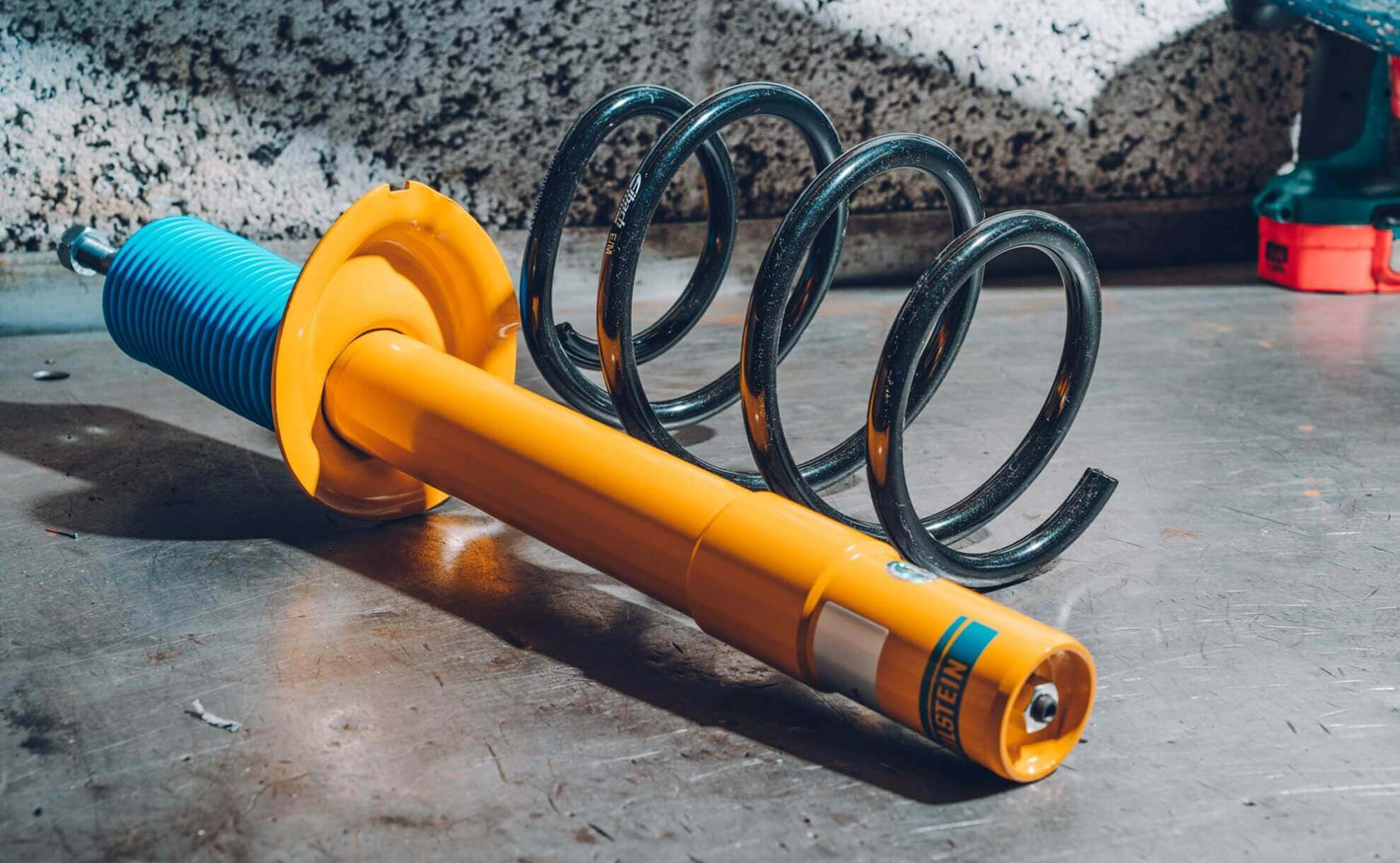
Performance coilover suspension
As the name suggests, a coilover suspension is a suspension with a screw thread. With this, the lowering can be adjusted individually. This is usually done by the driver or tuner and the thread is screwed to the desired height by hand. Tools or a workshop are not required for this.
By changing the hardness, as well as the rebound and compression damping, coilovers also allow flexible adaptation to the different conditions of the track and the vehicle.
You can find a detailed overview with all the advantages and disadvantages in our comprehensive coilover guide .
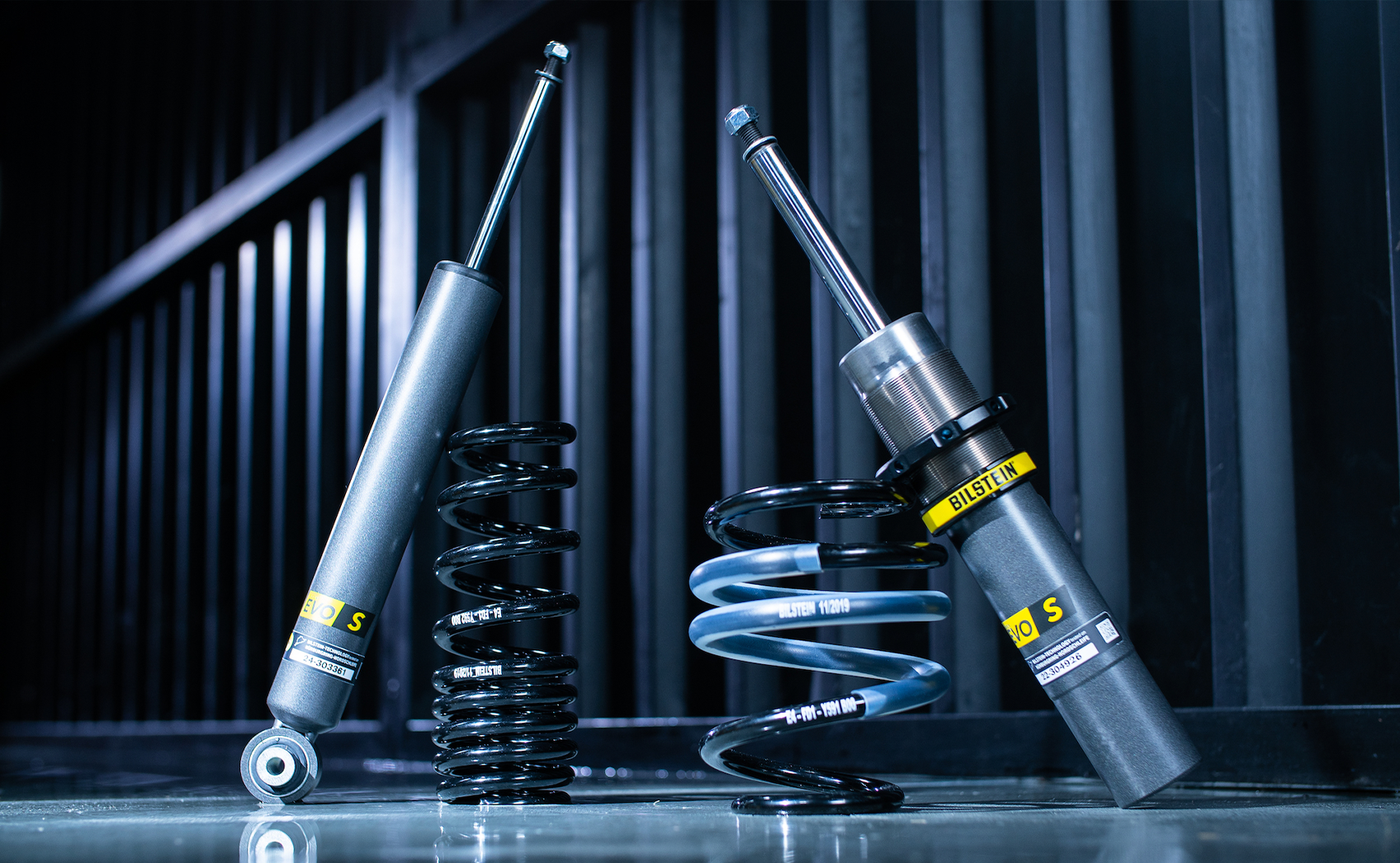
Air suspension
With air suspension, also called airride or air suspension, it is possible to continuously regulate the height of the car from inside the vehicle. The usual steel spring is replaced by an air bellows.
Due to their positive characteristics in terms of comfort and driving dynamics, air suspension systems have also been installed as standard in SUVs, saloons, convertibles and coupés in the luxury class for some years now.
In our article What is air suspension? The Airride air suspension module , we explain all the details of an air suspension and tell you what to look out for when installing it.
Retrofitting an air suspension is relatively expensive due to the many components and the associated complexity and is not realistic for most vehicles.
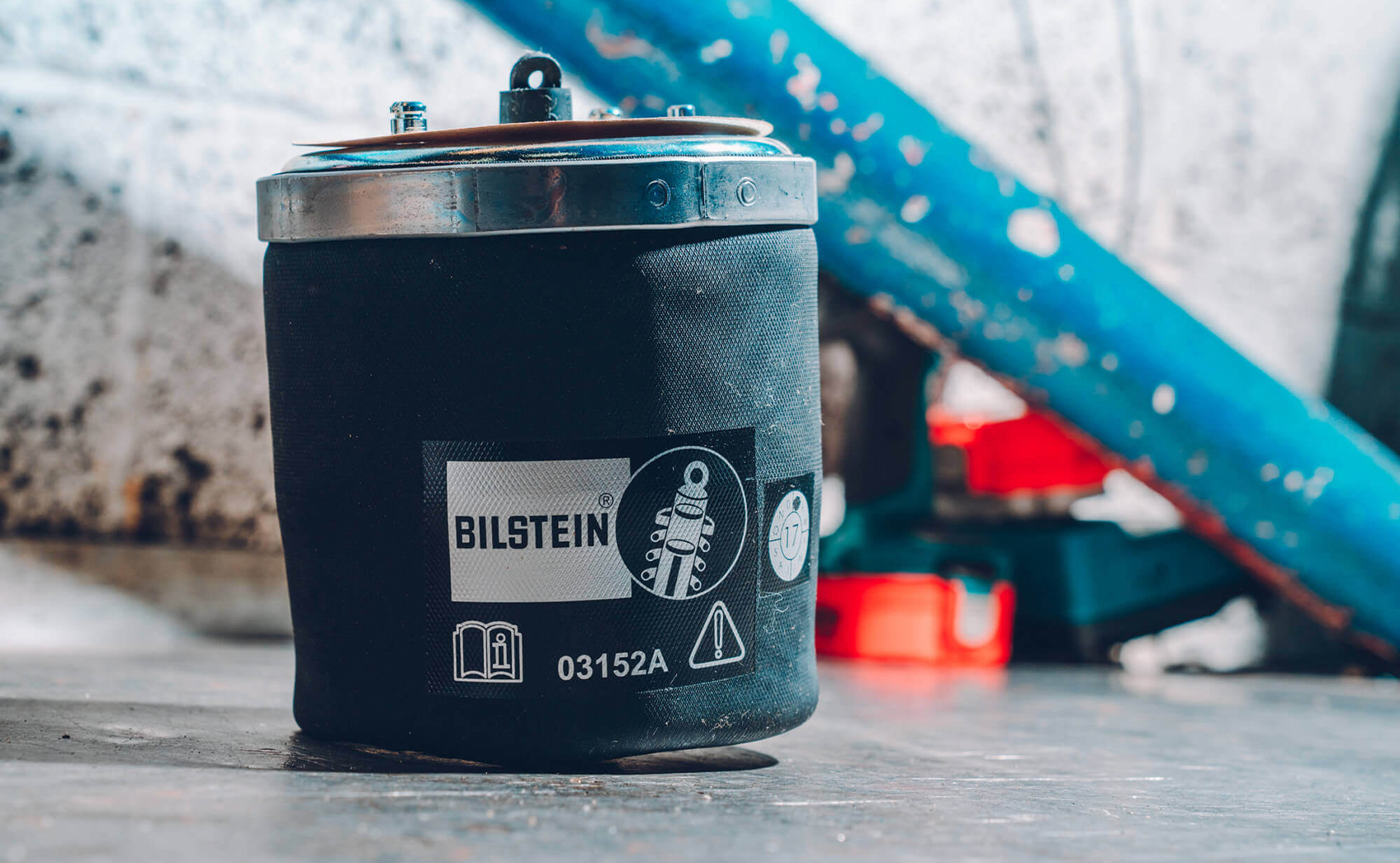
How expensive are sports suspensions? An overview of installation, registration and product costs
Since the prices of the various manufacturers vary greatly in some cases, it is not possible to make a clear statement about the exact costs. The costs can also vary from case to case due to installation by a specialist workshop or the respective vehicle model.
Nevertheless, we would like to try to show a rough classification and price range:
- Type of coilover suspension: Sports suspension kit with 4 shock absorbers for moderate lowering and dynamic, sporty handling (e.g. BILSTEIN B12 ). Average cost: approx. € 500-900
- Type of coilover: Workshop installation costs, approx. 2.5 working hours. Average costs: approx. € 150-250
- Type of coilover: Wheel alignment / wheel alignment Average costs: approx. € 35-70
- Type of coilover: Registration costs Average costs: approx. € 35-50
Please note: These are flat-rate costs that are realistic according to our experience. Depending on the individual case, vehicle and workshop, these prices may of course vary slightly.
With the BILSTEIN dealer and workshop search , you can find a suitable partner for the purchase and installation of your threaded ride height adjustable kit.
A sports suspension should always be installed by a professional. Theoretically, it is possible to replace the suspension on your own (assuming you have the necessary know-how), but installation by a specialist workshop or an experienced automotive mechatronics technician is always the safest option.
In addition to a warranty on the installation, as well as correct wheel alignment and registration, you can then be sure to fulfil all requirements according to TÜV guidelines and ABE (general operating permit).
We cannot and do not want to give step-by-step instructions for the installation of a complete suspension system at this point. That would go beyond the scope of this article. However, we can recommend this detailed installation video that goes into more detail on the various aspects of suspension installation.
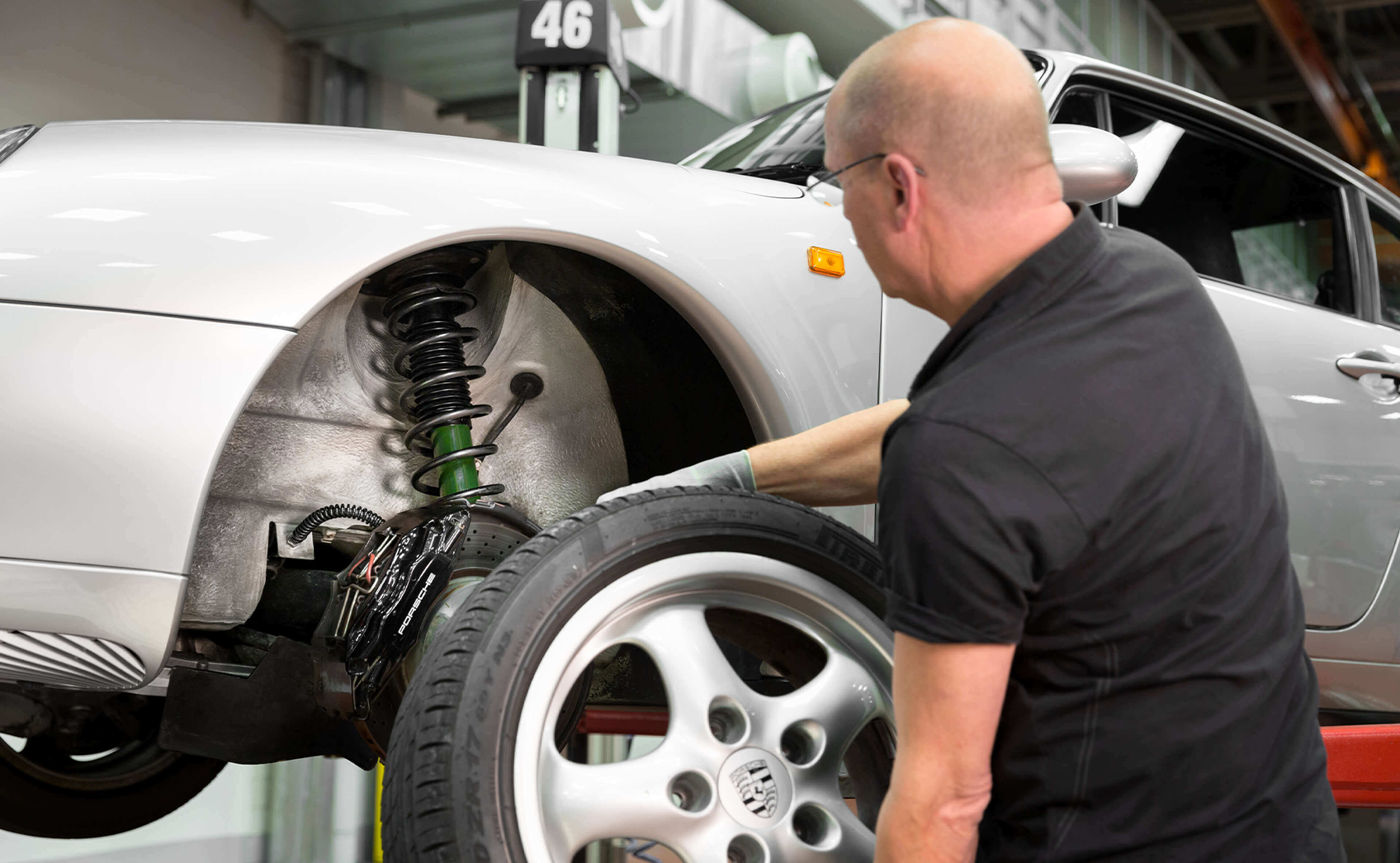
Changing the suspension | Installing sports suspension BMW AUDI VW | DIY Tutorial (DE)
What you should pay attention to when installing: TÜV, ABE and parts certificates
The most common form of approval for modifications to vehicles are parts certificates. In addition, there is also the general type approval (ABE) for parts that are particularly easy to fit. In contrast to ABE certificates, modifications that require a parts certificate still have to be approved by an expert.
Before buying a sports suspension, you should read the relevant parts report . You can usually find this on the websites or online shops of the various manufacturers.
The parts certificate always states the axle loads and drive concepts (all-wheel, front or rear-wheel drive) for which the certificate is valid. You will also find the maximum permitted lowering range.
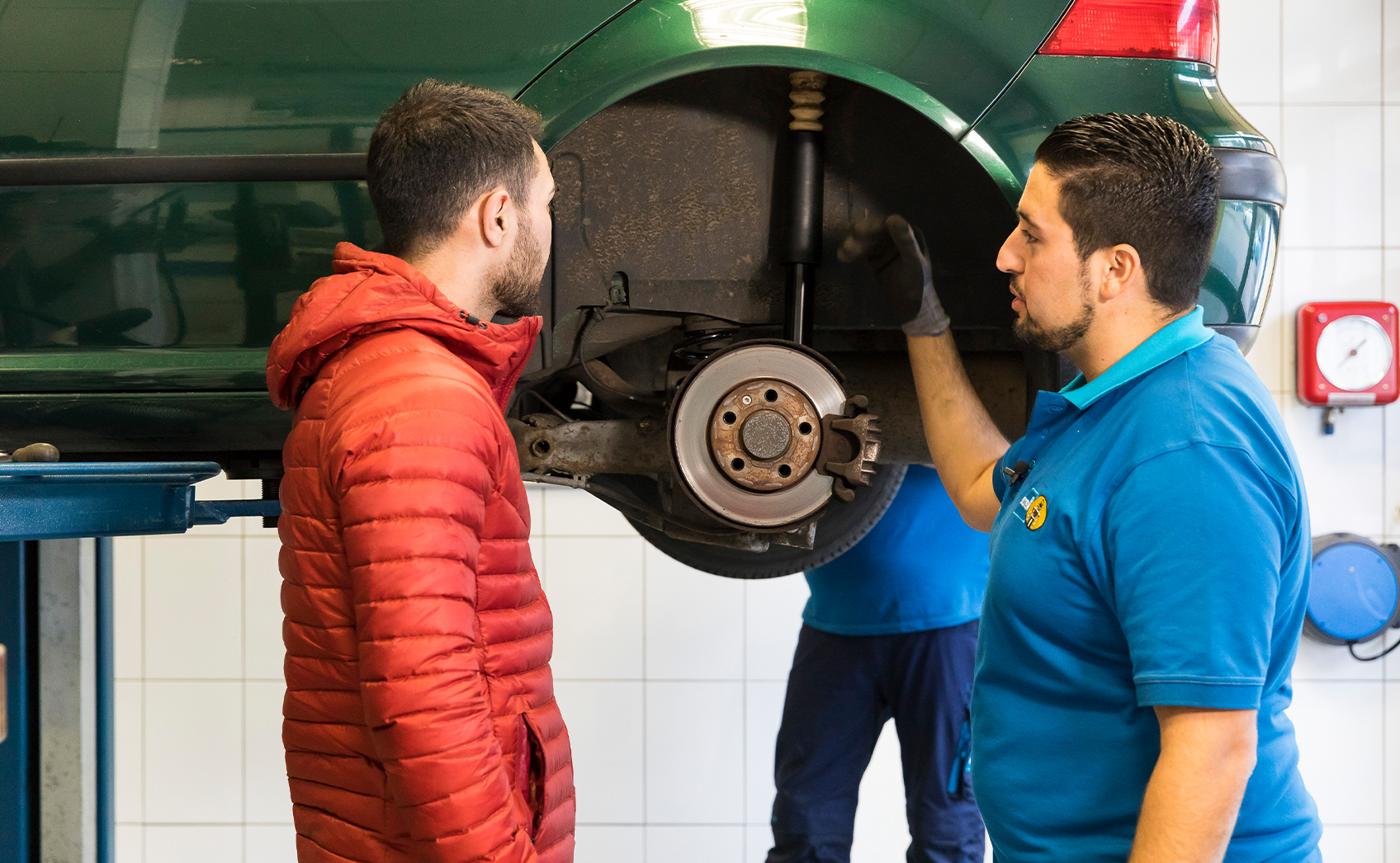
After the installation of a new suspension, the roadworthiness of the vehicle must still be checked by a TÜV or Dekra expert. The expert uses the conditions in the expert report as a basis. If you want to have modifications to your car approved, you must bring this document with you to the inspection.
Although a vehicle’s operating licence expires immediately after the modification, the car may still be taken to the TÜV or Dekra test centre. If the inspector does not find any defects, he issues a certificate according to §19.3 StVZO. With this certificate, the owner can have his modifications entered in the vehicle documents (document according to §19.4 StVZO) at the registration office.
A good overview of the registration regulations for the various tuning measures can be found on DEKRA Tuning .
Sports suspension installation by a BILSTEIN suspension expert
When you order a BILSTEIN sports suspension in our Online Shop , we also offer a special service for our private customers: If you have your suspension professionally installed by a BILSTEIN suspension expert , you will receive a 2-year extended warranty, a free suspension check and a discount on the installation costs.
As a long-standing original equipment manufacturer for almost all major vehicle manufacturers, we offer our sports suspensions for a wide range of vehicle models, including BMW, Audi, Mercedes, Porsche and VW.
To find out whether there is a BILSTEIN sports suspension for your vehicle, you can enter your exact vehicle model in our interactive product search .

A sports suspension is an important upgrade over a standard suspension and your best option if you want to lower your car or prefer a sportier ride.
Even if the standard suspension is defective and needs to be replaced, the installation of a sports suspension, such as the BILSTEIN B12 , can make sense. At around €800 including installation and registration by a specialist workshop, the costs for such an upgrade are kept within reasonable limits.
Sports suspensions with screw threads (threaded suspensions) offer you more flexibility and adjustment options, but are more expensive to purchase. This option is aimed at performance-oriented drivers and tuning enthusiasts who are looking for maximum individuality and the best track times in addition to lowering.
We recommend always having the installation carried out by a specialist workshop . The suspension is a safety-relevant component of your car and only in this way can you be sure to comply with all the important criteria for the TÜV and the operating permit.
You might also be interested in
Our detailed overview of coilovers explains the differences between the various coilovers and shows for which type of driver which suspension is worthwhile.
And in our latest Auto Tuning Guide , you’ll find out everything you need to know about tuning this year.
Our latest stories
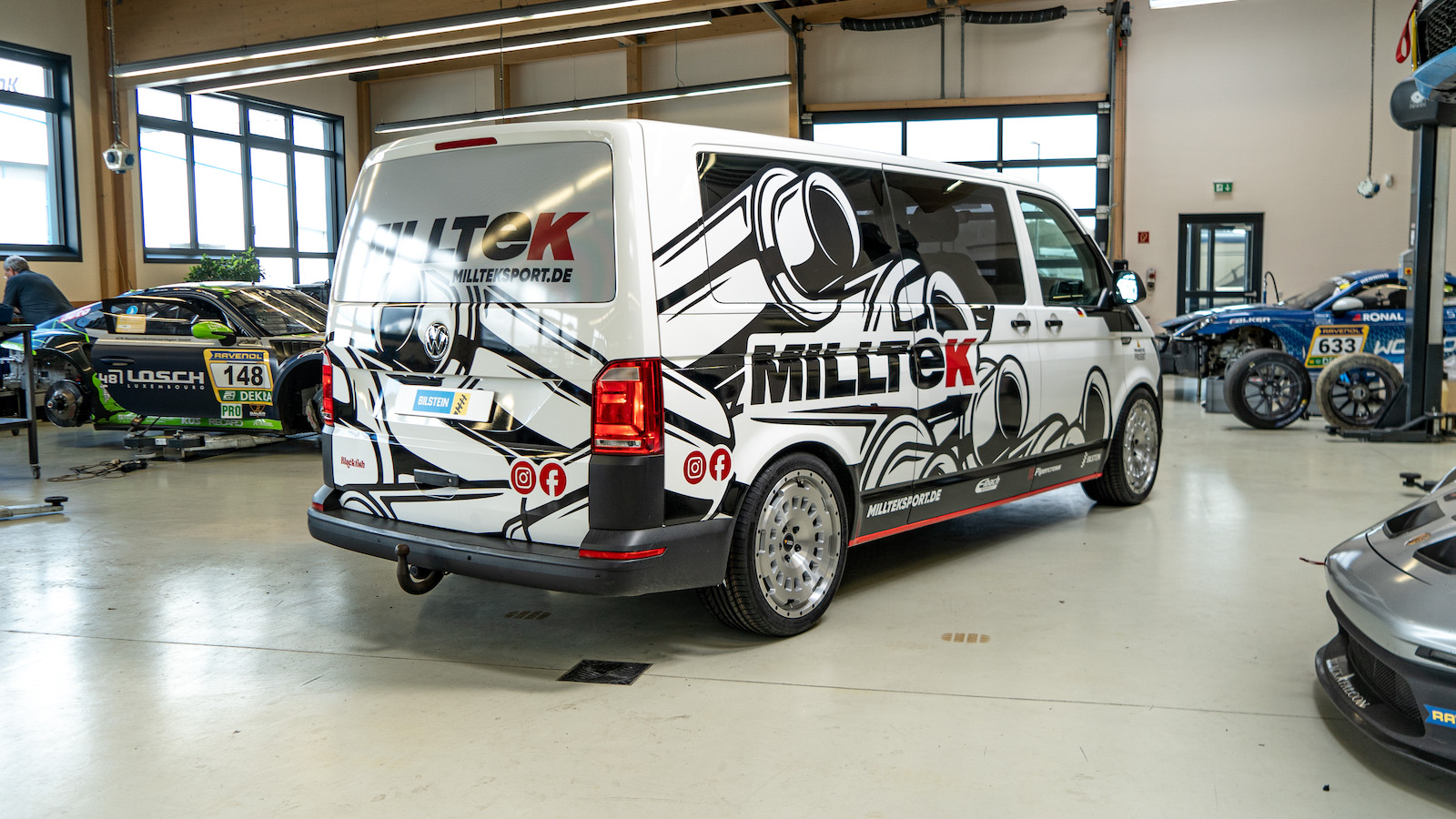
Lowering with ‘record suspension’: BILSTEIN B14 coilover suspension for the VW T6
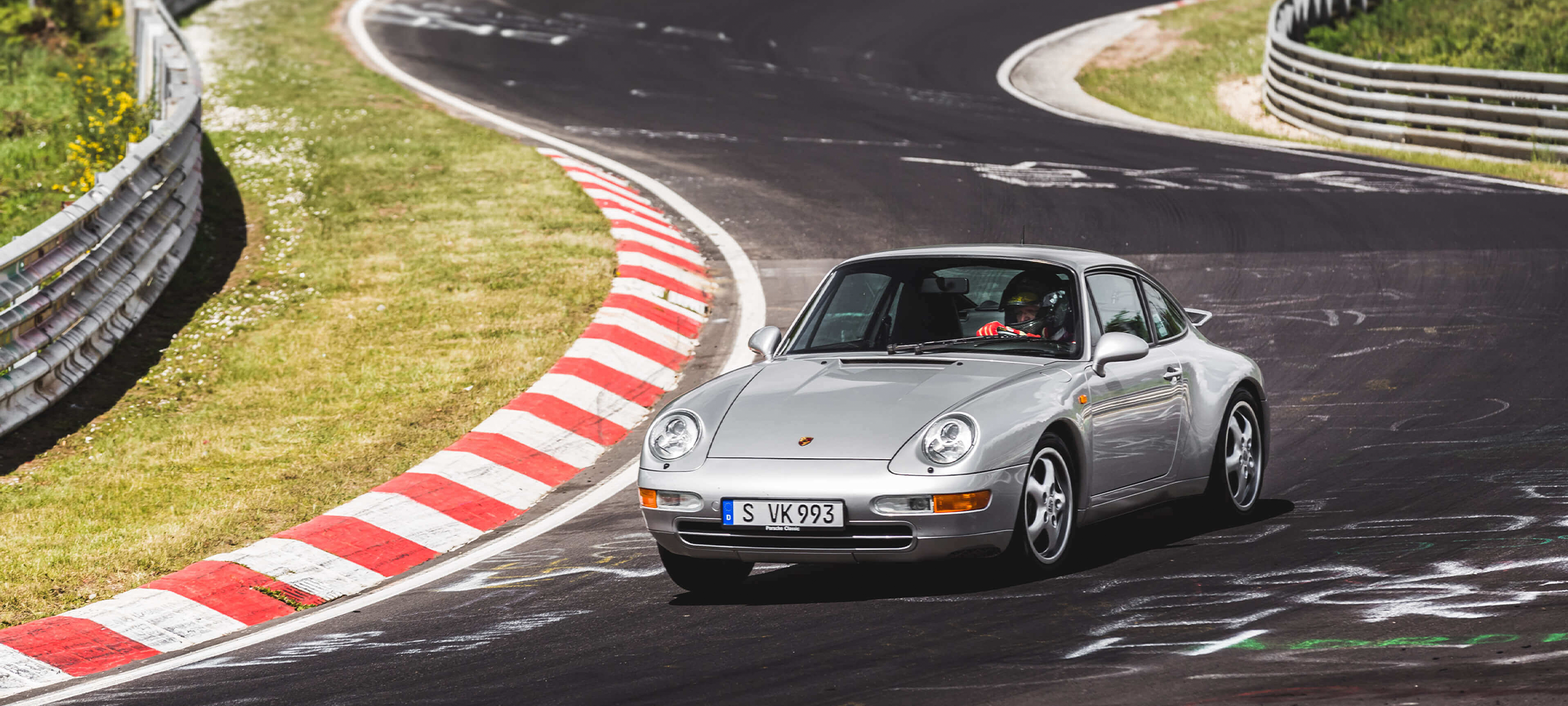
Trackdays: All events, dates and info
You are visiting this page from . But the selected region is:
International
To view content, products and services according to your region, we recommend switching to .
Jump to content

- Sign In
- Create Account
- Quick Navigation
- View New Content

- → Forums
- → The Technical Forum
- → The Technical Forum Archive
You currently have javascript disabled. Several functions may not work. Please re-enable javascript to access full functionality.

How much suspension travel does a modern F1 car have?
- Please log in to reply

- 8,357 posts
- Joined: December 98
Posted 14 June 2001 - 20:02
- Back to top
Advertisement
- Joined: December 00
Posted 14 June 2001 - 20:41
Posted 14 June 2001 - 21:01
- 1,017 posts
- Joined: July 99
Posted 15 June 2001 - 01:35

Tech Forum Host
- 30,725 posts
- Joined: January 00
Posted 15 June 2001 - 01:40
Posted 15 June 2001 - 03:34
- 1,629 posts
- Joined: October 00
Posted 15 June 2001 - 08:02
Originally posted by muppet Most of the "suspension travel" actually takes place as distortion/compression in the tyre sidewall. Less than an inch anyway.
- Joined: September 00
Posted 16 June 2001 - 00:12
#9 Ross Stonefeld

- 70,106 posts
- Joined: August 99
Posted 16 June 2001 - 06:46
#10 unrepentant lurker
Posted 16 June 2001 - 07:18
- 3,186 posts
- Joined: May 01
Posted 16 June 2001 - 10:57
#12 Powersteer
- 2,460 posts
Posted 18 June 2001 - 11:18
Posted 18 June 2001 - 18:42
#14 Yelnats
- 2,026 posts
- Joined: May 99
Posted 19 June 2001 - 06:15
Posted 19 June 2001 - 22:29
#16 Yelnats
Posted 21 June 2001 - 08:45
- Joined: May 00
Posted 21 June 2001 - 13:28
#18 Marco94
- Joined: December 99
Posted 21 June 2001 - 13:44
Posted 21 June 2001 - 20:14
- 2,411 posts
- Joined: March 99
Posted 21 June 2001 - 20:48
Posted 22 June 2001 - 17:37
Posted 23 June 2001 - 12:34
#23 GSXRTURBO1
Posted 28 June 2001 - 13:17
#24 Lephturn
- Joined: June 01
Posted 28 June 2001 - 21:17
- · Cookie settings
- Terms & Conditions
- Cookie Policy ·
- Privacy policy ·
- Contact us ·
- Forum rules ·

© MOTORSPORT NETWORK 2024. All rights reserved. Community Forum Software by IP.Board
- Need an account? Register now!
- Password I've forgotten my password
- Remember me This is not recommended for shared computers
- Privacy Policy
- Bahasa Indonesia
- Slovenščina
- Science & Tech
- Russian Kitchen
5 unique Russian sports car concepts (PHOTOS)
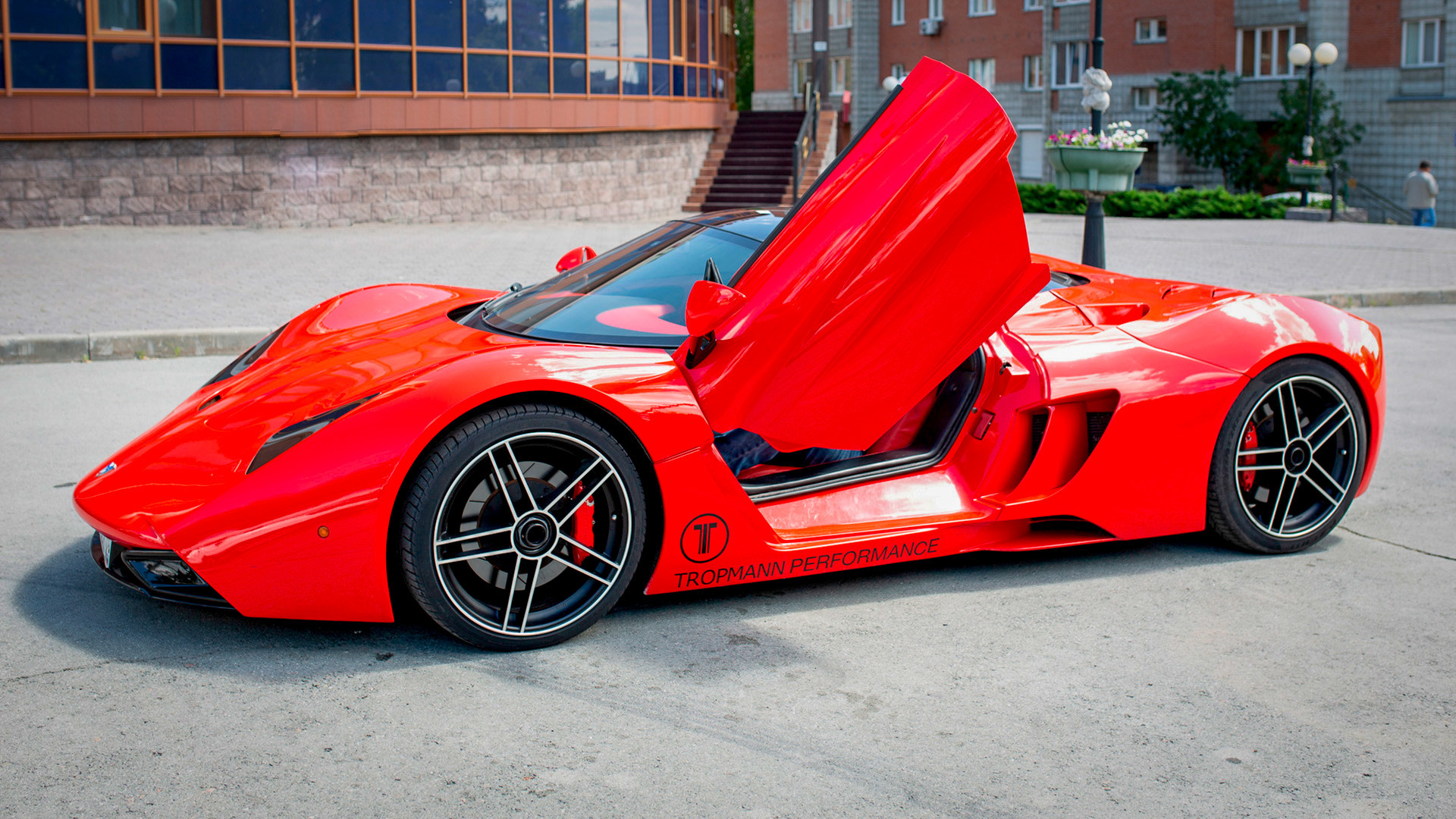
Sports car Marussia Motors model B1.
In the early 2000s, several Russian car manufacturers began developing sports cars. Some of these models eventually went on sale in small batches, but none ever made it into mass production.
1. Lada Revolution
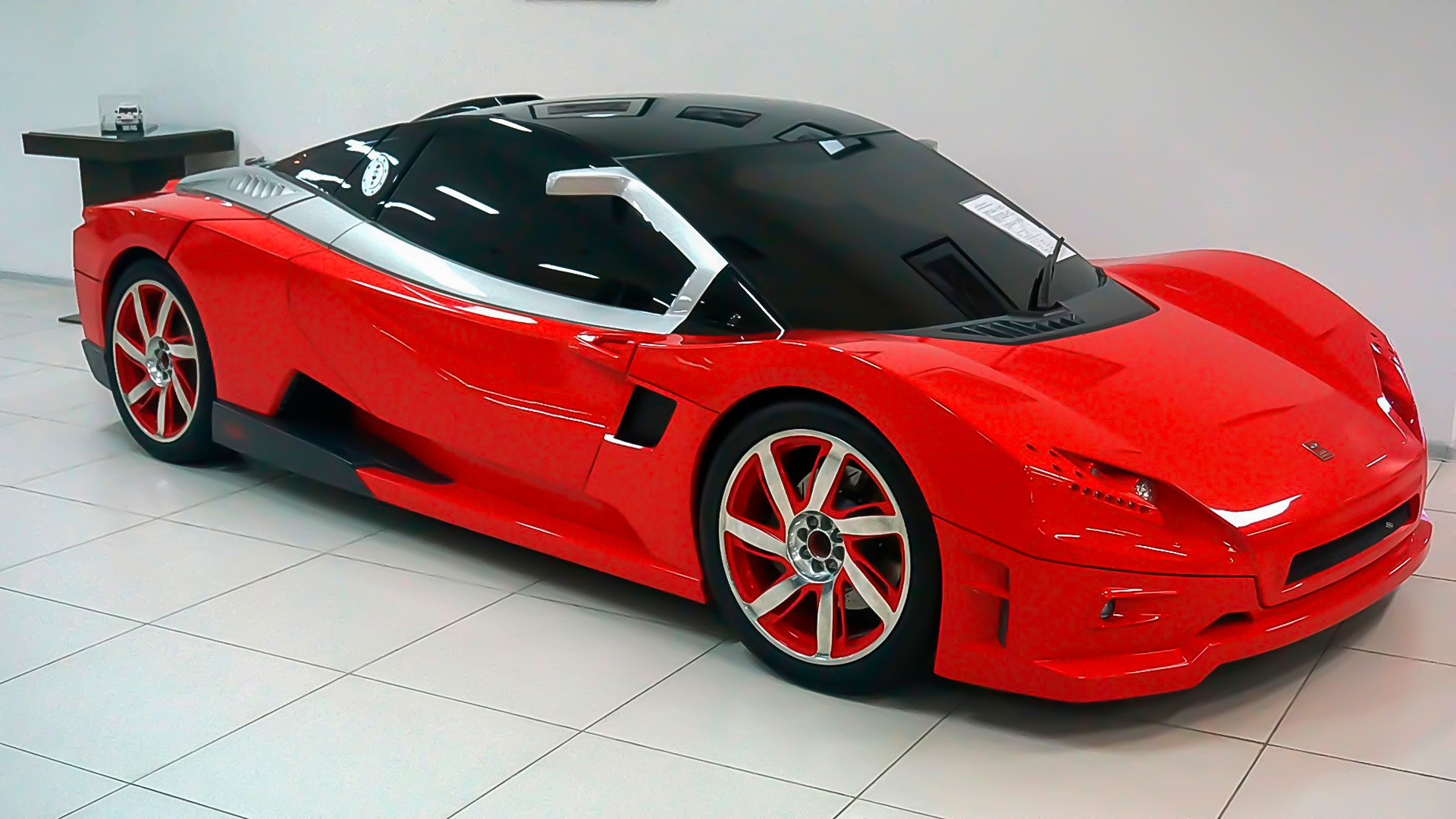
Lada Revolution III.
In October 2019, the AvtoVAZ museum in Tolyatti received the first LADA Revolution roadster, which had been first presented at motor shows in Moscow and Frankfurt in 2003. It could accelerate to 100 km/h in 6.5 seconds and reach speeds of up to 260 km/h. AvtoVAZ had developed this single-seat racecar practically from scratch rather than basing it any existing models, making it one of the company’s most ambitious projects. The LADA Revolution was intended for indoor racing tracks, but there was also a two-seater version of the car.
The LADA Revolution project underwent two upgrades: the RS2, which had modified suspension and engine cooling systems, and the Revolution III, which got a new design and a two-liter Renault engine. The concept was shown in Paris in 2008. The company planned to make the model available for order, but then that same year the project was canceled due to the financial crisis. In total, several dozen of these cars were produced, but just a handful remain operational.
2. Marussia

The Marussia sports car, which was created by rock musician Nikolai Fomenko and businessman Efim Ostrovsky, made its debut in late 2008 and was presented at the Frankfurt Motor Show in the fall of 2009. There were two B1 racecars and one B2 concept, which, in fact, different only in appearance. Both versions had 2.8-liter 420-hp V6 engines and could reach speeds of up to 300 km/h. The engines were manufactured in conjunction with the British company Cosworth, which specializes in racing cars. The car could reach 100 km/h in just 3.8 second, and its retail price was about 5.5 million rubles.
Marussia Motors was the first Russian carmaker to begin production of such premium racecars. The vehicles were assembled in Moscow, where the company’s flagship showroom was located.
In 2012-2014, the Marussia racing team took part in the Formula 1 Grand Prix, and Prince Albert II himself inaugurated a Marussia Motors showroom in Monte Carlo.

However, the company folded in 2014 due to of lack of funding. In total, it managed to produce about a dozen of its luxury cars. In 2017, Alexander Serdtsev, a motoring enthusiast from Novosibirsk, announced that he wanted to relaunch the brand and even bought a couple of its cars, which he is still trying to revive. Around five more Marussia cars are in private ownership, while one of the first models is kept at the Moscow Museum of Transport.

3. TagAZ Aquila

The creators of the so-called “Eagle” (which is what “Aquila” means in Latin) wanted to make a budget sports car. And you know what? They basically succeeded! Of all these projects, this car made by the Taganrog Automobile Plant was the most successful. In 2013-2014, some 200 of these cars were produced, and you can still buy some fully operational models second-hand.
The car came in just one version with a manual transmission, power steering and air conditioning. It sold for just 400,000 rubles (about $10,000 at the exchange rate at the time), and many drivers modified it to their needs. The scope for modification was quite large since the car had no sound insulation and huge gaps between the panels. On the plus side, like a proper sports car, it had a unibody made of fiberglass, and so owners did not have to worry about repairing external elements or corrosion. The car's internals were like those of a regular sedan. It had a 1.6-liter engine made by Mitsubishi and could reach speeds of up to 180 kmh. But it sported a bright and bold look. A low-cost Ferrari of sorts.
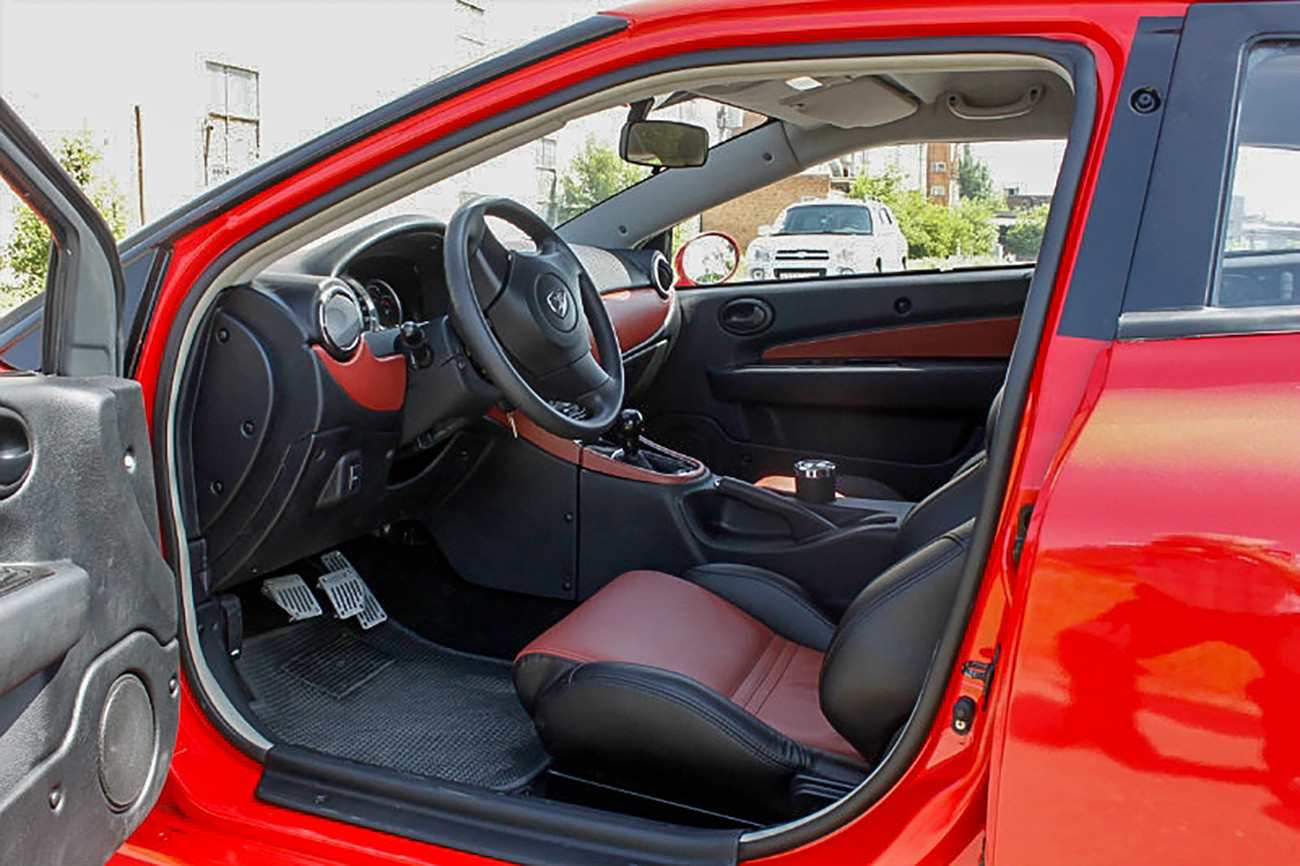
Nevertheless, demand for the car was poor, and, in effect, the model marked the end for TagAZ. In 2014, the company declared bankruptcy. Mikhail Paramonov, the company’s former owner, attempted to revive the Eagle in France. In 2016, he registered a company called MPM Motors in the suburbs of Paris, which presented a new version of the car under the name MPM Erelis. This “sports car for any wallet,” as its sales pitch goes, remains a concept car for now.
4. LADA Vesta TC1
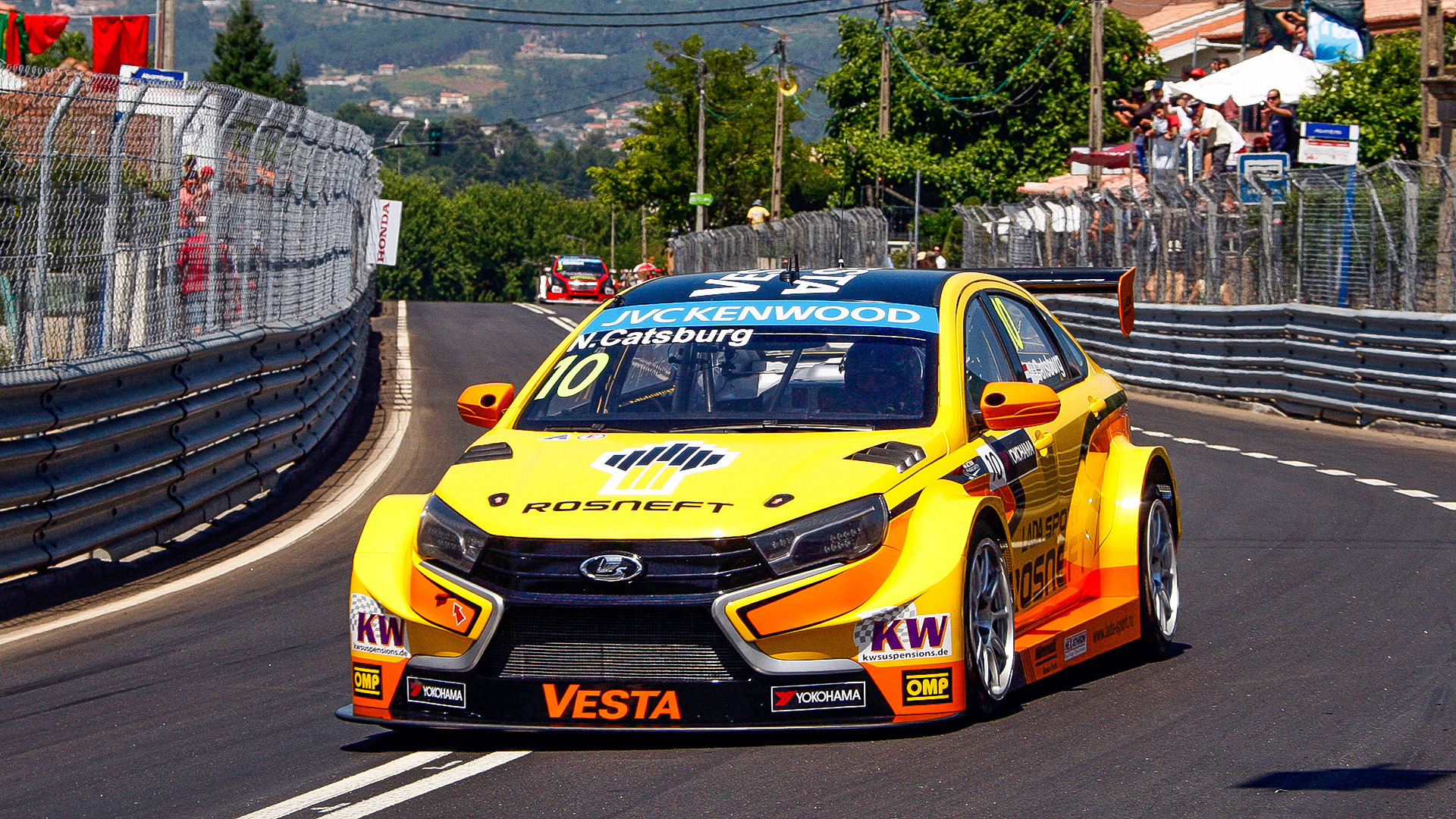
LADA Vesta during FIA WTCC 2016, at Vila Real in Portugal.
This concept car by AvtoVAZ was created on the basis of the Lada Vesta sedan. The model was unveiled at the Moscow International Automobile Salon in the summer of 2014 and was even spotted at a number of races.
The car was designed specifically for WTCC touring car racing. The Lada Sport team competed for two seasons until AvtoVAZ announced in 2016 that the company would instead concentrate on the Russian series of ring races. In September 2019, AvtoVAZ introduced its new Lada Vesta TCR car, billed as a new racing star.
The new Vesta has a 1.8-liter Renault M5P engine, 350 hp and an upgraded gearbox. Previously, the sports car was equipped with a 2.0-liter Renault F4RT cast iron engine with similar power.
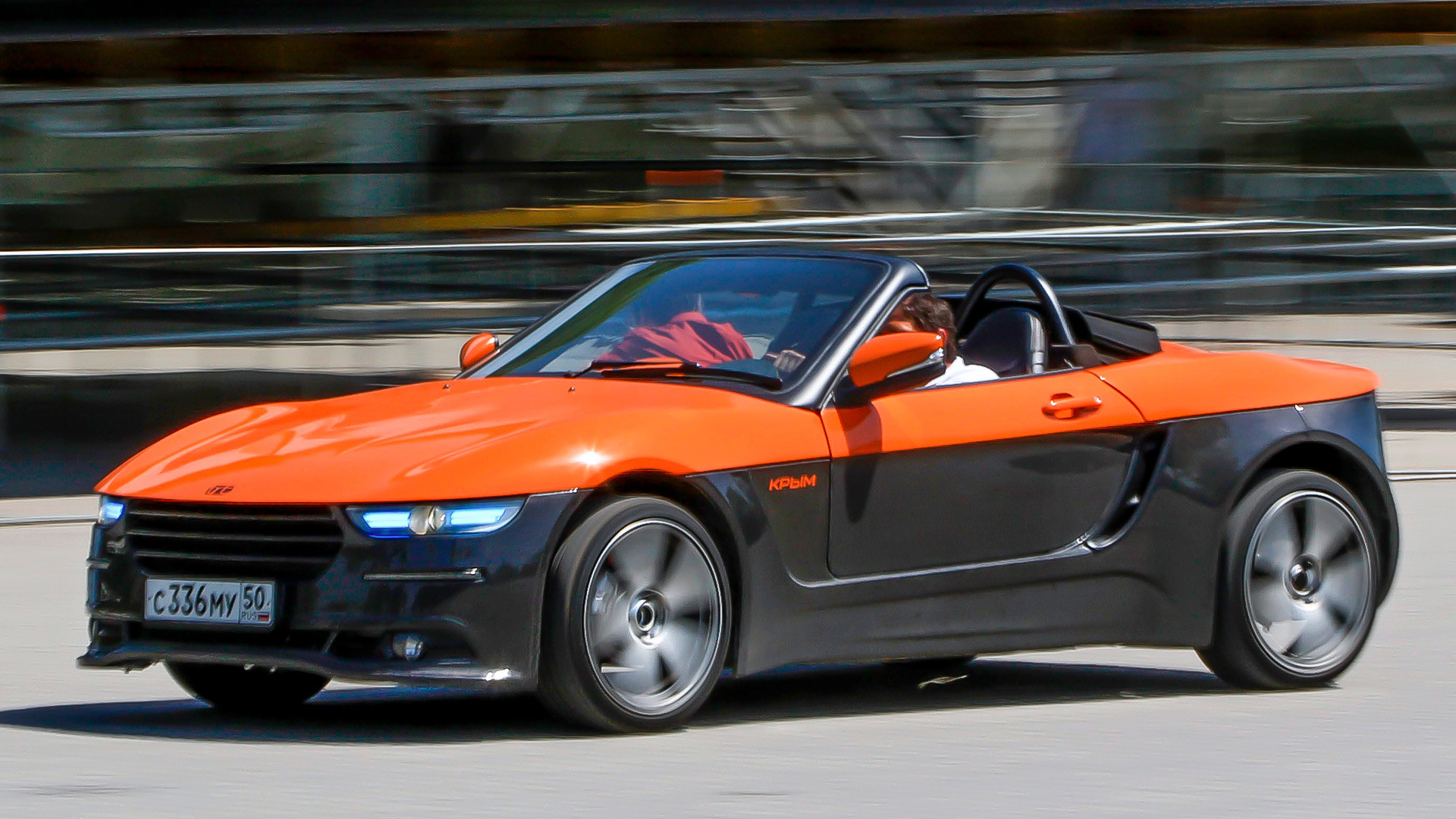
This sports car looks like an ambitious student project...and that’s is exactly what it is. It was created at the Bauman Moscow State Technical University in 2016 on the basis of a LADA Kalina. The two-seater carbon-fiber sports car with manual transmission accelerates to 100 km/h in a matter of 8.6 seconds and can reach speeds up to 220 km/h. This may not be enough to compete in a race, but is quite sufficient for a road trip to the sea.
There are two copies of the car, one of which we have even had a chance to test . Initially, it was assumed that the car would go into mass production and be sold for just 650,000 rubles, but it did not make it past being an experimental model in the end. In 2019, a second car was presented as a restyling of the first one. It has a lighter and tougher body, a new clutch and suspension. Some of its components, such as gear knobs, are 3D-printed. The trunk is still small, but after all this isn’t a car for doing your supermarket shopping, is it?
If using any of Russia Beyond's content, partly or in full, always provide an active hyperlink to the original material.
to our newsletter!
Get the week's best stories straight to your inbox
- 10 famous Soviet cars 'driven' by Western ideas
- This Soviet designer made supercars in the USSR a reality - from his garage
- These Soviet cars beat Ferrari & Lamborghini (well, almost!)
This website uses cookies. Click here to find out more.
- Crime And Law
- State And Regional
- Election 2024
- WHIO YouTube (Opens in new window)
- Dayton Gets Real (Opens in new window)
- Nation And World
- Israel At War
- Making a Difference
- Beat The Stigma (Opens in new window)
- Lottery Results
- Entertainment
- WHIO-TV Closed Captioning
- Interactive Radar
- Hour by Hour Forecast
- Closings & Delays Participation Info
- #Skywitness7
- WHIO Weather 24/7 Stream
- Live Traffic Conditions
- Gas Prices: Pump Patrol (Opens in new window)
- WHIO 24/7 News
- The $pend $mart Stream
- Law & Crime
- Curiosity NOW
- Touchdown 7
- Orange Zone (Opens in new window)
- Cleveland Browns
- Dayton Flyers
- WHIO-TV 75 Years (Opens in new window)
- 7 Circle of Kindness
- About WHIO-TV
- Contests (Opens in new window)
- What's on WHIO-TV
- CBS Programming (Opens in new window)
- About Laff TV (Opens in new window)
- More Ways to Watch
- FAQ: WHIO TV & Radio
- FCC Applications
- Visitor Agreement
- Privacy Policy
- Program Lineup
- Advertise With Us
- Ask The Experts
- Contact WHIO Radio
- Official Contest Rules
- How to Listen To WHIO Radio
- Radio Staff
- Steals and Deals
- Share Your Pics!
Ottawa Senators forward Shane Pinto looks ahead after gambling suspension, trying season
OTTAWA, Ontario — (AP) — Shane Pinto is convinced the experience will help him down the road. It just didn’t feel that way in the moment.
Already sidelined due to a contract impasse that saw him miss the start of last season, the Ottawa Senators forward from New York's Long Island was suspended for 41 games for "activities relating to sports wagering" by the NHL last October.
Pinto took the punishment and returned to have a strong second half of the campaign, but watching from afar as teammates with big expectations struggled to start the schedule — coach D.J. Smith was fired in December amid the tailspin — didn't sit well.
“I had to mature a lot,” Pinto told The Canadian Press. “It has been a blessing in disguise, in a sense. It taught me a lot about how much I love the game and how much I miss it, and how much of a part of my life it is.”
He believes the suspension built character and taught him a lot.
“Taught me not to take things for granted. It can be taken away from me pretty quickly,” he said. “It was definitely a hidden blessing, and it made my life better.”
The 23-year-old Pinto declined to get into what exactly led to the punishment handed down by Commissioner Gary Bettman though he told the “Empty Netters” podcast his mistake was having friends in the U.S. place online wagers for him while he was in Canada. He said one of the league’s industry partners flagged his account, which led to an investigation.
“That’s proxy betting, so that’s obviously a big no-no,” Pinto said on the podcast in July. “It was, like, an illegal act, so obviously it was a pretty big deal. That’s why we didn’t want to fight (the ban) and we just kind of accepted it.”
The NHL said Pinto didn’t bet on NHL games. He told the Canadian Press he wasn’t aware he was doing anything wrong.
“I just didn’t know any better,” he said.
The Senators missed the playoffs for a seventh consecutive year, but they will have Pinto back at training camp this week as the group looks to finally make a surge up the standings behind the likes of Brady Tkachuk, Tim Stutzle, Thomas Chabot, Jake Sanderson and Claude Giroux. The new coach is Travis Green and the team acquired goaltender Linus Ullmark — the Vezina Trophy winner in 2023 — from Boston in June.
“There’s been a lot of distractions,” Pinto said. “Now we’re steady. We have stability. We brought in the right pieces … I think it’s going to be a good year, finally. Hopefully we take the next step.”
Pinto signed a two-year, $7.5 million extension in July. Limited by injuries early in his career, Pinto had 20 goals and 35 points in 82 games in 2022-23. After he returned from the suspension in January, he put up 27 points (nine goals, 18 assists) in 41 games.
“There’s enough excuses,” Pinto said. “The fans are sick of it like we are. It’s time for us to become men this year … there’s enough talking about it.”
AP NHL: https://www.apnews.com/hub/NHL
Copyright 2024 The Associated Press. All rights reserved. This material may not be published, broadcast, rewritten or redistributed without permission.
:quality(70)/cloudfront-us-east-1.images.arcpublishing.com/cmg/WIKTL3NJGBEJDEXO7FIH72YED4.jpg)
Sean Combs indicted, charged with racketeering, sex trafficking
:quality(70)/cloudfront-us-east-1.images.arcpublishing.com/cmg/M5ANR665Y5HTJB3SHLZTTOTLGY.jpeg)
Fisherman finds dead body in Great Miami River
:quality(70)/cloudfront-us-east-1.images.arcpublishing.com/cmg/OLZQK2GIWBEDLIOIURYLWADBRY.jpg)
Titan implosion: Image of doomed submersible on sea floor released
:quality(70)/d1hfln2sfez66z.cloudfront.net/02-23-2024/t_605fa6caa32749239b5cf55b7fac2aae_name_MUGSHOTS_35763654_JPG_web.jpg)
Man sentenced for stabbing woman over 30 times, beating her with baseball bat
:quality(70)/d1hfln2sfez66z.cloudfront.net/09-17-2024/t_0e1e2c0a012b43c9b1081b344714c03c_name_iStock_485865833.jpg)
Chain restaurant closes all Southwest Ohio locations
- Travel Advisories |
- Contact Us |
- MyTravelGov |
Find U.S. Embassies & Consulates
Travel.state.gov, congressional liaison, special issuance agency, u.s. passports, international travel, intercountry adoption, international parental child abduction, records and authentications, popular links, travel advisories, mytravelgov, stay connected, legal resources, legal information, info for u.s. law enforcement, replace or certify documents.
Share this page:
Russia Travel Advisory
Travel advisory june 27, 2024, russia - level 4: do not travel.
Reissued after periodic review with minor edits.
Do not travel to Russia due to the consequences of the full-scale invasion of Ukraine by Russian military forces. U.S. citizens may face harassment or detention by Russian security officials, arbitrary enforcement of local laws, limited flights into and out of Russia, and the possibility of terrorism. The U.S. Embassy has limited ability to assist U.S. citizens in Russia. The Department has determined that there is a continued risk of wrongful detention of U.S. nationals by Russian authorities. U.S. citizens residing or traveling in Russia should leave immediately.
The U.S. government has limited ability to help U.S. citizens in Russia, especially outside of Moscow. The U.S. Embassy is operating with reduced staffing, and the Russian government has restricted travel for embassy personnel. Furthermore, all U.S. consulates in Russia have suspended operations, including consular services.
There have been reports of drone attacks and explosions near the border with Ukraine as well as in Moscow, Kazan, and St. Petersburg. In an emergency, you should follow instructions from local authorities and seek shelter.
Russia may refuse to recognize your U.S. citizenship if you are a dual U.S.-Russian citizen or have a claim to Russian citizenship. Russia has denied consular officers visits to detained dual U.S.-Russian citizens. The Russian government has forced citizens with dual nationality to join the Russian military and prevented them from leaving the country. In 2022, the Russian government mobilized citizens for its invasion of Ukraine. Military conscription continues.
In Russia, the rights to peaceful assembly and free speech are not always protected. U.S. citizens should avoid protests and taking photos of security staff at these events. Russian authorities have arrested U.S. citizens who joined protests. Moreover, there are many reports of Russians being detained for social media posts.
U.S. citizens should know that U.S. credit and debit cards no longer work in Russia. Due to sanctions, sending electronic money transfers from the U.S. to Russia is nearly impossible.
Commercial flight options are minimal and are often unavailable on short notice. If you wish to depart Russia, you should make independent arrangements. The U.S. Embassy has limited ability to assist U.S. citizens in leaving the country, and transportation options may suddenly become even more restricted.
Click here for Information for U.S. Citizens Seeking to Depart Russia.
U.S. Embassy staff generally are not allowed to fly on Russian airlines due to safety concerns. Recently, the FAA downgraded Russia's air safety rating from Category 1 to Category 2. Additionally, the FAA banned U.S. flights in some Russian areas, including the Moscow Flight Information Region (FIR), the Samara FIR (UWWW), and the Rostov-na-Donu (URRV) FIR within 160NM of the boundaries of the Dnipro (UKDV) Flight Information Regions. Check the FAA's Prohibitions, Restrictions, and Notices for more information.
Country Summary:
Russian officials have interrogated and threatened U.S. citizens without cause. This includes former and current U.S. government and military personnel and private U.S. citizens engaged in business. U.S. citizens may become victims of harassment, mistreatment, and extortion.
Russian authorities may not notify the U.S. Embassy about the detention of a U.S. citizen and may delay U.S. consular assistance. Russian security services also target foreign and international organizations they consider “undesirable.”
Russian security services have arrested U.S. citizens on false charges, denied them fair treatment, and convicted them without credible evidence. Furthermore, Russian authorities have opened questionable investigations against U.S. citizens engaged in religious activity. U.S. citizens should avoid travel to Russia.
Russia's invasion of Ukraine has destabilized security in southwestern Russia. In October 2022, the Russian government declared martial law in the following border areas with Ukraine: Bryansk, Kursk, Belgorod, Voronezh, Rostov, and Krasnodar. Under martial law, authorities can set curfews, seize property, and restrict movement. The Russian government may detain foreigners, forcibly relocate residents, and limit public gatherings. U.S. citizens should avoid all travel to these areas.
Russian authorities have questioned, detained, and arrested people for “acting against Russia's interests.” Local authorities have targeted people for posting on social media or supporting "anti-Russian" groups and punished individuals for criticizing the government or military. The Russian government's current "LGBT propaganda" law bans discussion of LGBTQI+ related topics. In November 2023, the Supreme Court labeled the so-called "international LGBT movement" as extremist. This decision effectively made it a crime to support the human rights of LGBTQI+ persons in Russia.
Terrorists continue to plan attacks in Russia. The March 2024 Crocus City Hall incident proved they can strike suddenly. Terrorists may target tourist areas, transport hubs, and markets. They may also target government buildings, hotels, clubs, restaurants, and places of worship. Parks, events, schools, and airports are also potential targets. U.S. government employees under Embassy (Chief of Mission) security responsibility are not permitted to travel to the North Caucasus, including Chechnya and Mt. Elbrus. U.S. citizens should avoid travel to those areas.
The international community does not recognize Russia’s annexation of Crimea and does not acknowledge Russia’s purported annexation of Donetsk, Luhansk, Kherson, and Zaporizhzhya. Russia staged its full-scale invasion of Ukraine, in part, from occupied Crimea and there is a heavy Russian military presence in these areas. There is intense fighting across these regions and Russian authorities there have abused both foreigners and locals. Authorities have specifically targeted individuals who are seen as challenging Russia’s authority.
The U.S. Embassy in Kyiv administers consular services to U.S. citizens in Crimea, Donetsk, Luhansk, Kherson, and Zaporizhzhya. However, the conflict limits the Embassy's ability to help U.S. citizens in these areas.
Read the country information page for additional information on travel to Russia.
If you decide to travel to Russia:
- Read the information on what the U.S. government can and cannot do to assist you in an emergency overseas .
- Consider the risks involved in having dual U.S.- Russian nationality.
- Have a contingency plan in place that does not rely on U.S. government help. Review the Traveler’s Checklist .
- Follow news for any important events and update your plans based on the new information.
- Ensure travel documents are valid and easily accessible.
- Visit our website for Travel to High-Risk Areas .
- Enroll in the Smart Traveler Enrollment Program (STEP). This will allow you to receive Alerts and make it easier to locate you in an emergency.
- Follow the Department of State on Facebook and Twitter .
- Review the Country Security Report for Russia.
- Visit the CDC page for the latest Travel Health Information related to your travel.
Travel Advisory Levels
Assistance for u.s. citizens, russian federation map, search for travel advisories, external link.
You are about to leave travel.state.gov for an external website that is not maintained by the U.S. Department of State.
Links to external websites are provided as a convenience and should not be construed as an endorsement by the U.S. Department of State of the views or products contained therein. If you wish to remain on travel.state.gov, click the "cancel" message.
You are about to visit:

- Documentary
Copyright © 2018 CGTN. Beijing ICP prepared NO.16065310-3
- Terms of use
- Privacy policy

IMAGES
VIDEO
COMMENTS
In conclusion, suspension travel and motion ratio are crucial aspects of suspension design and tuning that can greatly affect a car's performance. The required suspension travel varies depending on the application, and a proper understanding of motion ratio is necessary for comparing spring rates between different cars. By optimizing ...
How much shock stroke do I need for a street car? For straight axle applications, most cars will require a shock with 5 inches of stroke or so. This allows for the 2.5 inches of compression travel and 2.5 inches of extension travel mentioned above. Independent suspensions will vary depending on their design.
Mar 31, 2017. #8. Most front shocks you see on buckets only have about 3" of travel so that is going to be your limitation regardless of any rock climber suspension you design. The rears are not much more. Speedway T-Bucket Short Shocks, Chrome. Pro Shocks® SM300 Pro Street Rod Shock, 9 Inch Ride Height.
The Touring car in the middle likely has a 3.0-3.5Hz suspension frequency with it's simple aero package and race tires, while the F1 car will have a frequency in excess of 5.0Hz, as its downforce produced and ultimate grip level is far greater. The bike will run off the same principles as a car's suspension.
101 Suspension. MAKING YOUR CAR HANDLE WELL is a really complicated task if you overthink it. Ride frequencies, roll centers, camber curves, scrub radii; it's enough to make you build show cars instead. So, I have an easy solution for you: ignore all of that stuff. DSPORT brings you Suspension 101 to answer your handling questions.
A sport suspension is a type of suspension that is specifically designed to provide more extreme handling and skiing performance. It is also often used in racing, where it can provide better stability and grip. Sport suspension typically has higher stiffness and resistance to deflection than normal suspension.
Shocks. You can adjust the damping force when your shock tries to compress and when it rebounds. You can also adjust the speed of compression and rebound. Low speed affects braking, accelerating, and turning. These are all smooth loads on the suspension, and you can adjust the resistance to those movements and loads.
The suspension on a competition car has the same basic function as a road car, which is to support the body of the vehicle. However, the requirements which are placed on race suspension systems and the individual components escalate much higher than that. In essence, race suspension has two main roles. The first is to control the weight ...
You can find an OE example of this suspension in '64-72 Chevelles and many subsequent GM cars. This image from Schwartz Performance shows a custom rear suspension design that uses upper control arms that are oriented toward the rear. These arms also form a triangle similar to Chevelle-type rear suspension.
Car Suspension Basics, How-To & Design Tips. The suspension on a vehicle serves multiple purposes: It provides a way to isolate the chassis and driver from the shocking jolts that the tires experience going over anything but a glass-smooth surface. It provides a way to keep all the vehicle's tires in contact with an uneven surface.
Unsurprisingly, it has 2.5" more travel in the rear - the Nissan has a silly beam axle setup with very short dampers. This is ignoring motion ratios, but on both cars the suspension attach very close to the wheel so the ratio is very close to 1:1. Anyway, also on both cars, the strut body seems significantly longer than the shaft.
More suspension travel results in a smoother ride. Imagine a car speeding towards a brick wall. The average force (and acceleration) required to bring a moving body to rest is inversely proportional to the stopping distance. The ability of a shock-mitigating device to lessen an impact and ensure a smooth ride is tied to its stopping distance.
June 22, 2021 9 min read. Sport suspension refers to a suspension in which the combination of springs and shock absorbers is tuned more sportily than is usual for a standard suspension. This ensures better roadholding, especially in bends and when driving at high speed. The most important points at a glance:
Keywords: Multi-objective optimization / suspension system / sports car / quarter-car / numerical solution unsprung mass / sprung mass / suspension travel 1 Introduction One of the most critical factors for assessing vehicle performance is ride comfort and researchers have been trying to improve it on each vehicle. Road roughness
The suspension travel of an F1 car is very much dependant on the tracks with curb-hopping tracks and wet-weather setups using a softer setup and high-speed tracks tending towards the stiffer setups. The softer setups absorb the bumps over the curbs better and spend less time in the air, always a desirable feature when cornering. ...
The kinematics of the suspension of a sports car Suspension of a sports car should provide the proper kinematics of the wheels of the car and have a minimum weight of the unsprung parts. ... Results of calculation. Zɜ (mm) Yɜ (mm) ȕ0 (°) Suspension travel (mm) -30 -20 -10 0 10 20 30 270 310 7,2 B (mm) 1341 1344 1346 1349 1351 1352 ...
In September 2019, AvtoVAZ introduced its new Lada Vesta TCR car, billed as a new racing star. The new Vesta has a 1.8-liter Renault M5P engine, 350 hp and an upgraded gearbox. Previously, the ...
Sports Ottawa Senators forward Shane Pinto looks ahead after gambling suspension, trying season. September 17, 2024 at 5:45 am EDT ... Mother wants justice after car hits 11-year-old, takes off ...
Travel Advisory. June 27, 2024. Russia - Level 4: Do Not Travel. O D U T. Reissued after periodic review with minor edits. Do not travel to Russia due to the consequences of the full-scale invasion of Ukraine by Russian military forces. U.S. citizens may face harassment or detention by Russian security officials, arbitrary enforcement of local ...
Sports Travel Nature Picture Video Live Specials 17:09, 11-Jun-2019 Car Sharing in Moscow: Saving time & costs of parking, easing conjestions ... If you live in a big city and need to get around, you might already have tried car sharing - where you hire a car via an online app for just one short journey at a time. Developers say it can be ...